DAFNE Tree (ESP) : Drawing, architecture, lettering and painting in situ
Lasting impressions of her childhood
DAFNE Tree is a female artist born 1988 in Andújar, Jaén, situated in South of Spain. She remembers seeing graffiti pieces on a wall at the entrance of her village already in the 90ies. DAFNE grew up in the countryside, living a couple of years in a farm house with her family with fields of olive and nut trees. It was on a roman site of the 12th century, with traces of Roman and Islamic architecture. Archaeologists were coming often to the site to search for coins and different archaeological artifacts. She was seven years old at that time and fascinated by the site, found artifacts and fossils herself and was as well into dinosaurs she discovered in books. She had a hidden place on the site where she wrote her name and drew or engraved signs she found in books about ancient civilizations on the stonewalls. She remembers as well the architectural plans, her father was drawing, for building their own house there. She loved drawing already, mostly dinosaurs at that time, and knew she wanted to do fine arts later in life already. Aged 13, while being on a car trip with her family in Spain, she discovered two kids around 15 years old spraying on a container next to the road. She was surprised to see that they were children and not adults and felt the desire to do that too. With 14 years, a friend called her who had found some full spray cans. They went to an old wall in the rural environment and DAFNE Tree wrote a name of a singer in an Arab calligraphic style. This was her first use of a spray can: writing.
Student times between Spain and the UK and first works outdoor
With 16 years DAFNE Tree moved to Seville and was going to an art school for two years before attending university. There she studied Greek mythology as well and was fascinated by the story of Daphne. This name gave her the idea for her own artist’s name DAFNE, adding Tree, a link to her love for nature and for antiquity. At that time she was drawing a lot of pastel works at school, mostly landscapes, inspired by the Impressionists like Monet. In 2006, she met a graffiti writer in Seville, and they were hanging out at a skate park and hall of fame next to the river. He was painting letters, and with him she started spraying some characters and caricatures close to his style. A friend showed her an old stadium outside the city later for painting, and she started to go there spraying from time to time.
From 2008 to 2013 she studied Fine arts at Sevilla Fine Art University and did her Licence in five years. At that university she met Manolo Mesa, a Spanish figurative muralist, with whom she went painting sometimes and is in contact till today. The Sevilla Fine Art University was a very academic university, teaching exclusively drawing in the first three years, human anatomy, drawing of nude, figuration. The following years courses of perspective, sculpture and modeling, as well as landscape painting were taught. In 2011, DAFNE Tree got a scholarship for one year at the Winchester School of Art, University of Southampton, in UK. She got a studio for sculpture at the university, where she started to develop a geometric drawing style, to minimize figures, simplify forms, in an angular, 3D, geometric, cubist way to synthesize figurative forms, work more serial and leaving human figure behind. In 2013, back to Spain, she got her final degree at Sevilla Fine Art University and went right back to UK, this time to London. There she was the drawing assistant to Aleksandra Mir, an international contemporary artist, preparing projects for the „Drawing Room Gallery“ and later for an exhibition of Aleksandra Mir at Albertina Museum in Vienna.
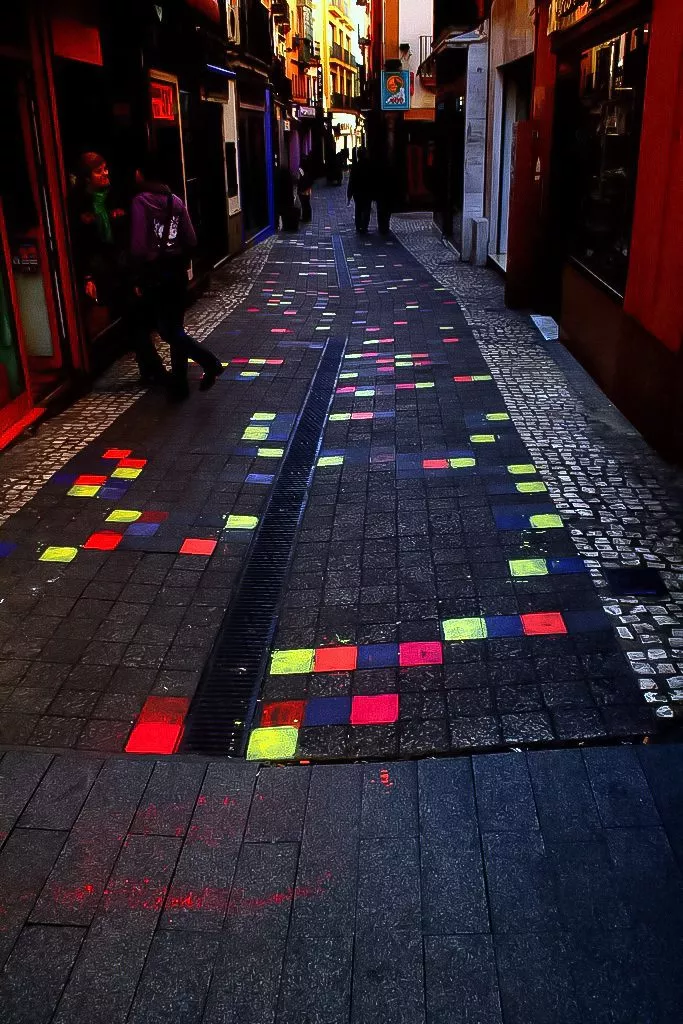
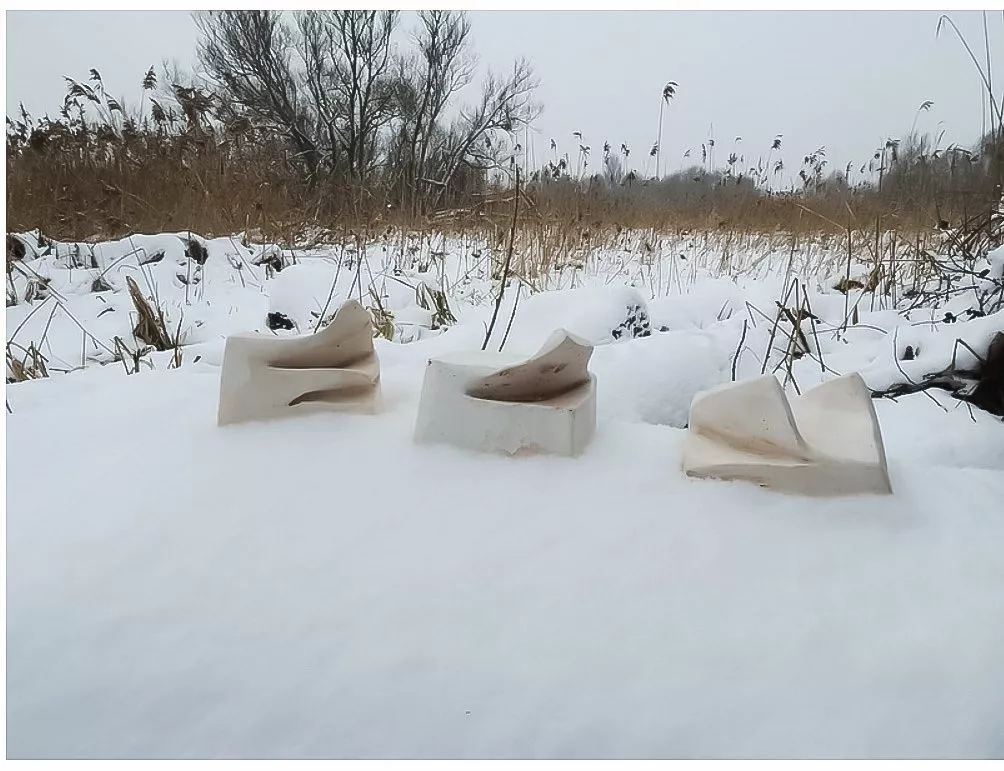
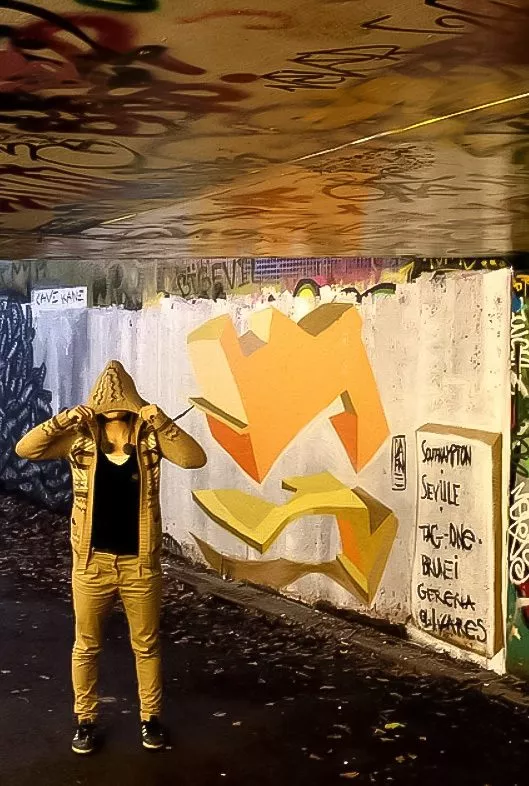
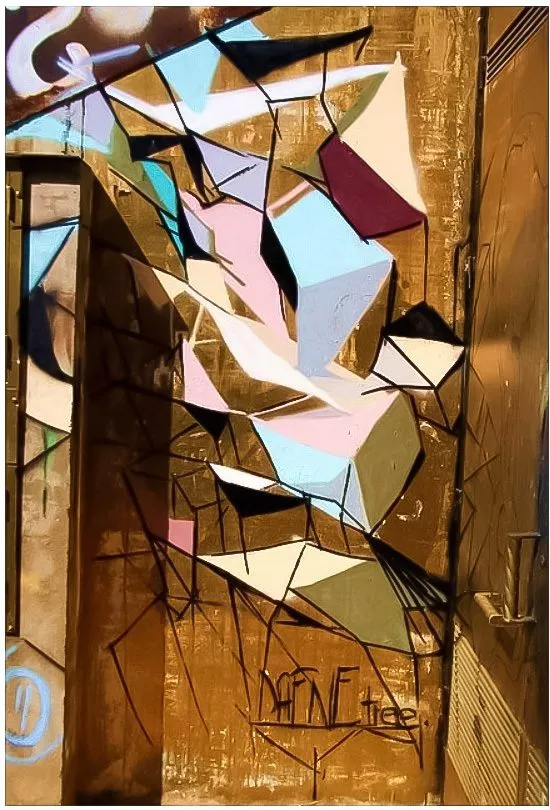
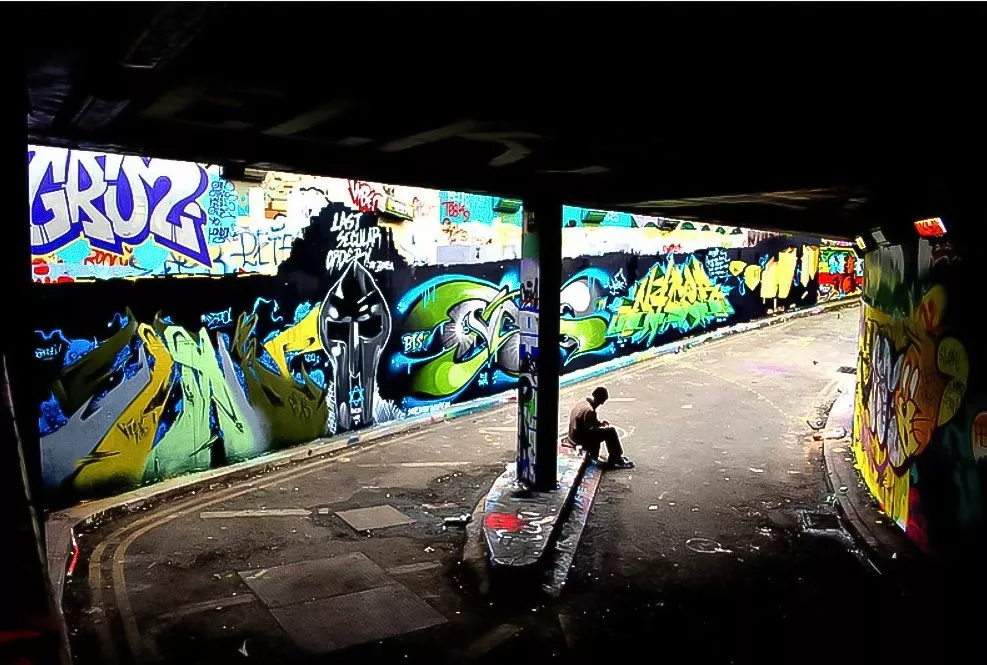
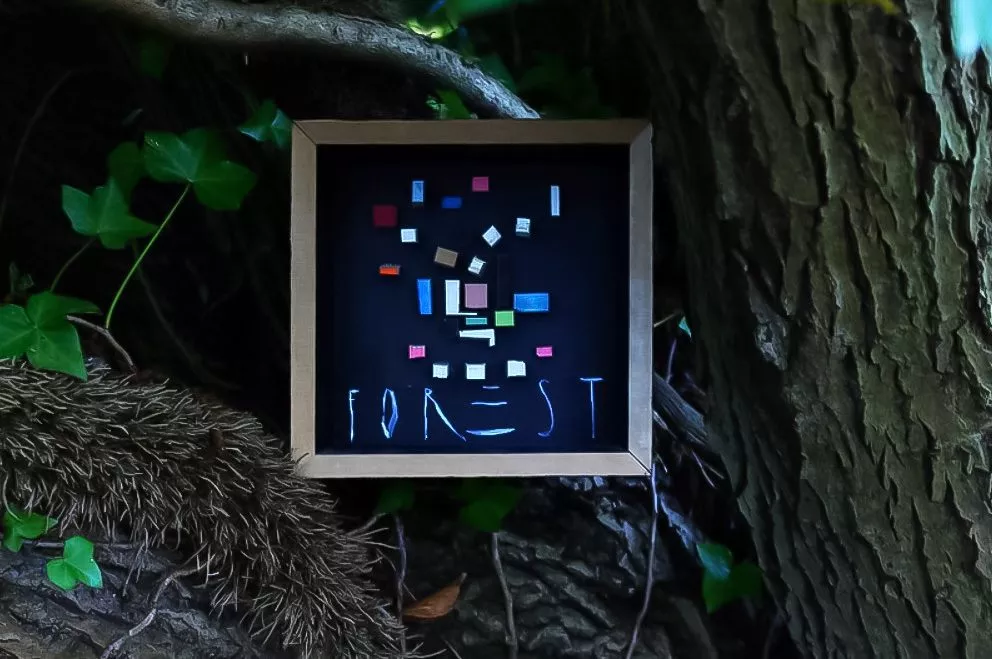
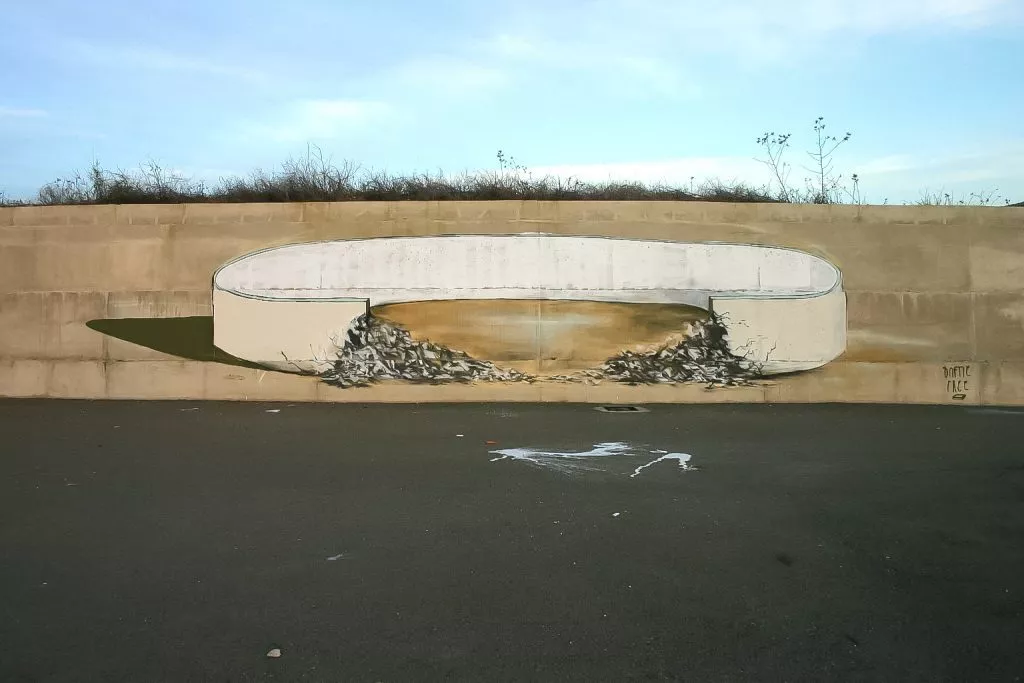
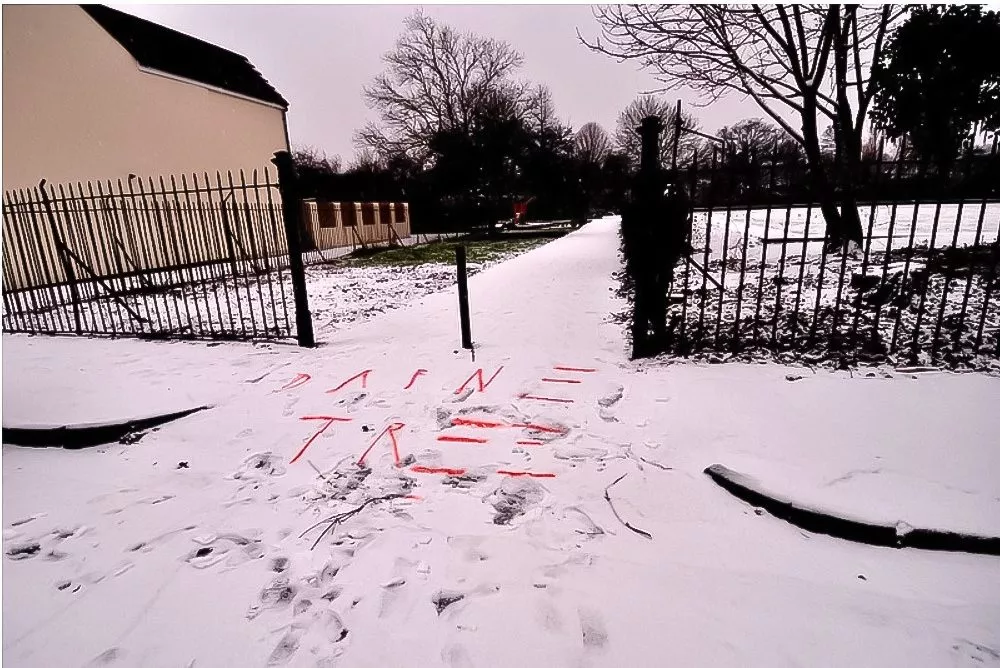
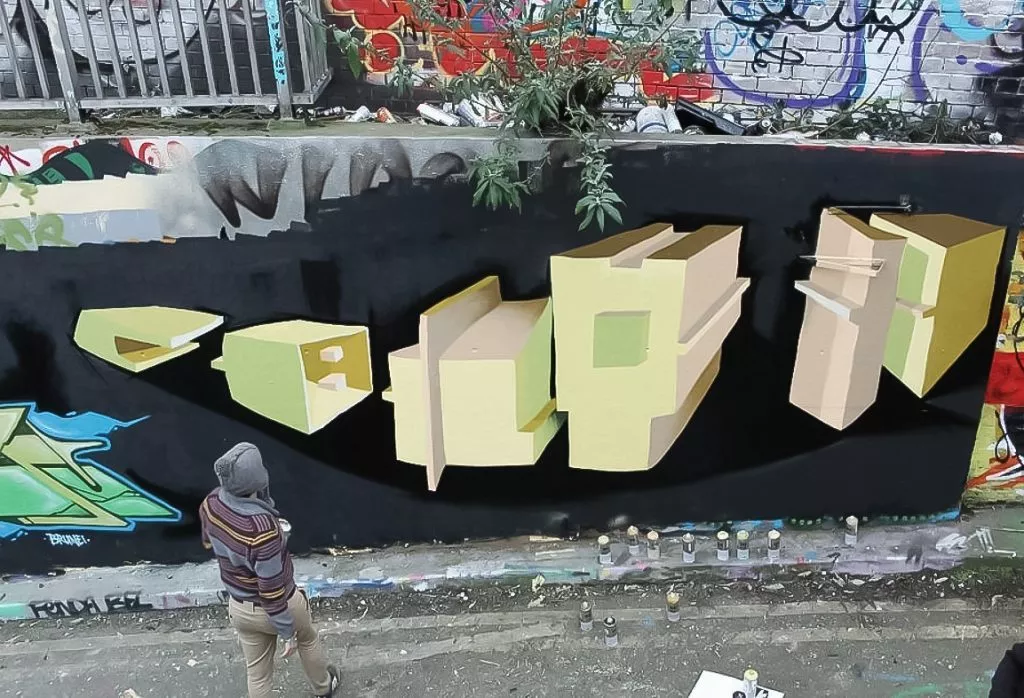
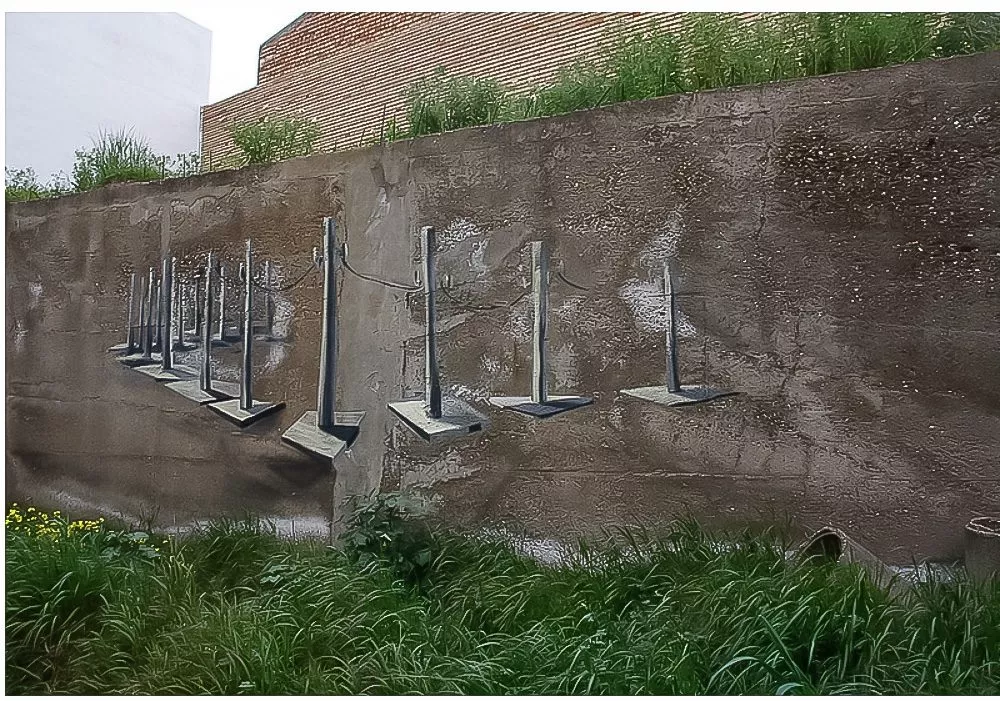
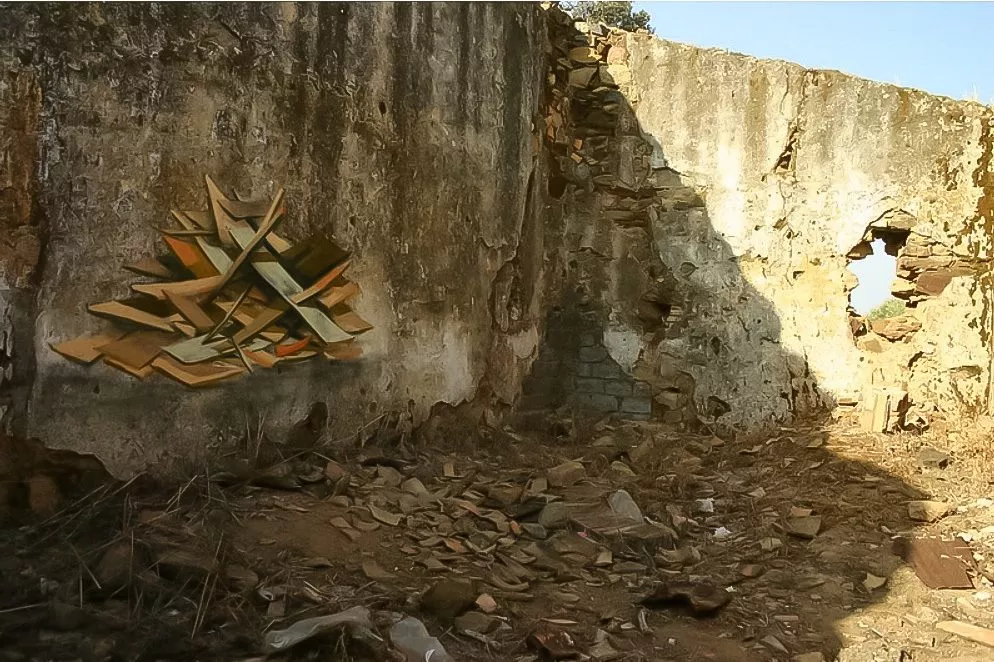
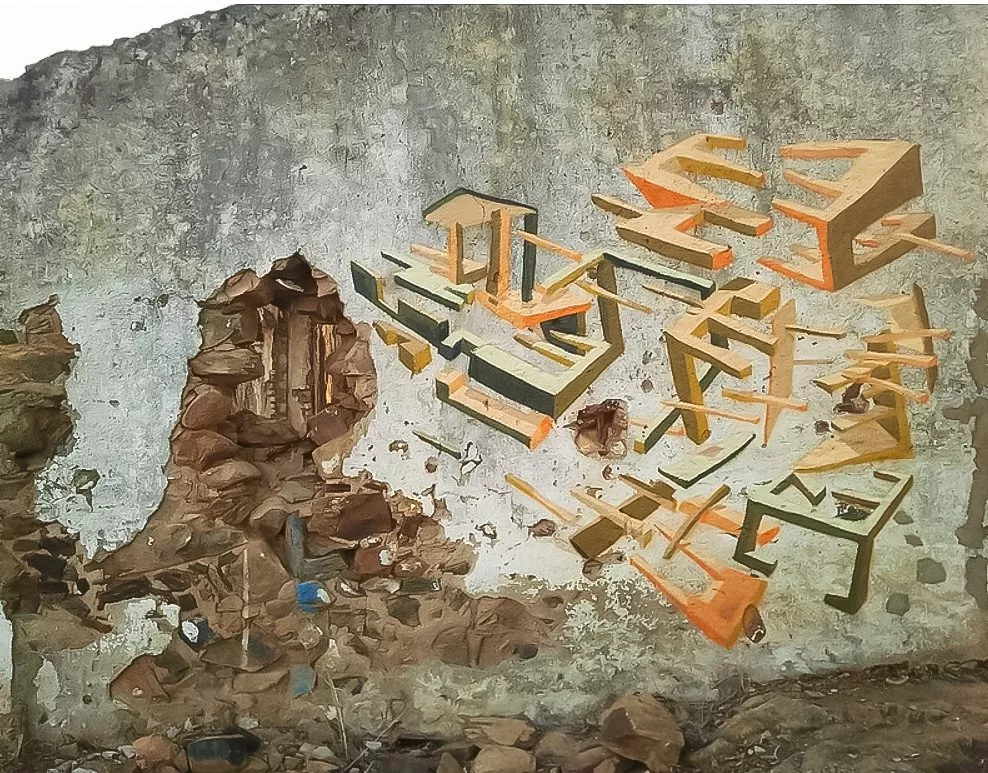
Inspirations through modern, contemporary art and style writing
During her studies DAFNE Tree discovered modern and contemporary artists that inspired her, like Gordon Matta-Clark, Sol LeWitt, Richard Tuttle and some Land Art artists like Robert Smithson. She also saw a Malevich retrospective exhibition in London, that made a lasting impression on her. She likes the deconstructionism ideas and interventions in architecture of Gordon Matta-Clark, the work in situ by Sol LeWitt and Land Art in general for intervening in the nature. And she knew as well the work by international style writers, and especially appreciating the work by Dutch writer DELTA. During the student years DAFNE Tree experimented with some works outdoor in situ, doing some sculptures with wood, installations in the nature and in the urban space. In London, she felt a lot of changes for her own work, she was thinking more about spaces, observing different locations and streets and studying architecture like brutalist buildings. And in London she started to look for graffiti pieces and styles, liked pieces by NYCHOS and met SKYHIGH at the Waterloo Hall of fame. She was painting outdoor a couple of times, starting lettering with her name TREE in 2015 in a 3D-style. A bit later she used the letters for the name ERROR for the first time, an easy word to paint fast in her opinion, structural letters, and an anecdote for human failure and vulnerability. And a moniker she still uses today when painting lettering. Her letters sometimes lay on the back on an imaginary surface, creating space through a transverse vanishing point perspective or standing together like volumes of a fictive architecture. With the aspect of rectangular architectural elements like wallpieces, she adds texture and volume to it through graphical shadings, to make them look like concrete or stone. DAFNE Tree likes 3D-lettering because of the creation of space around the piece and the structured letters like architectural elements. Playing with spatiality and perspective for letters, she does it as well in her later works with figurative-abstract geometric compositions, with shapes reminding walls, stones and ancient or unfinished architectures.
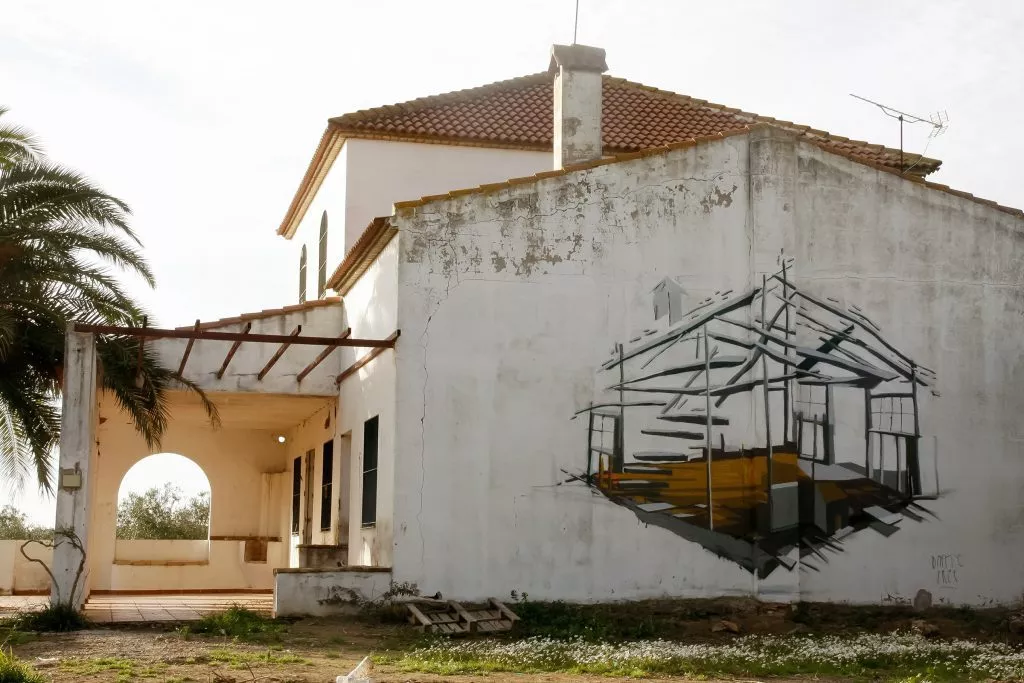
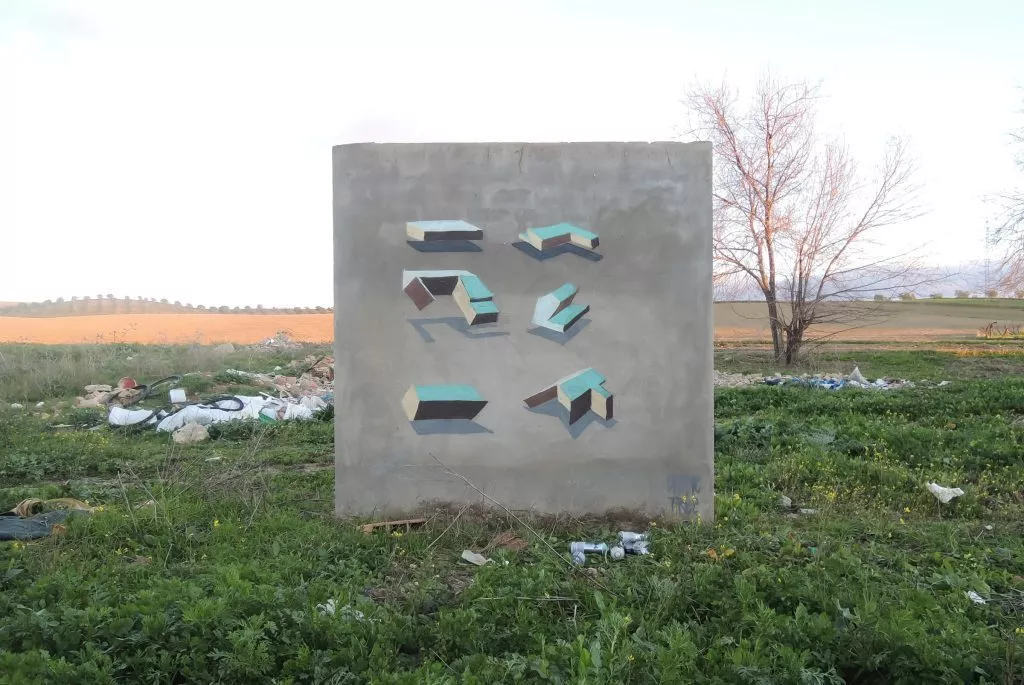
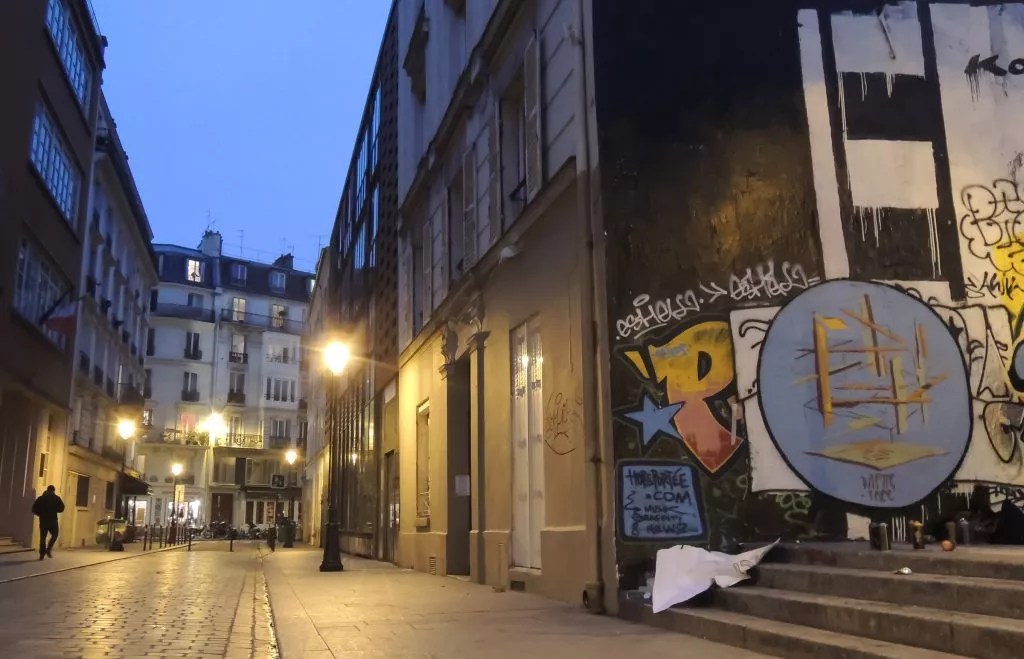
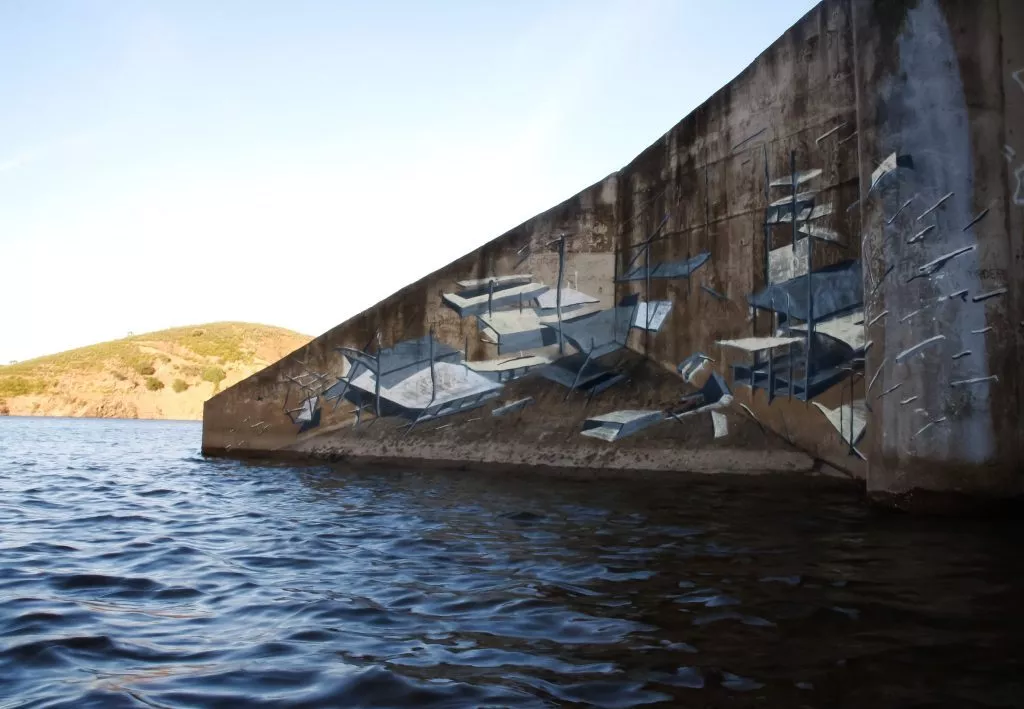
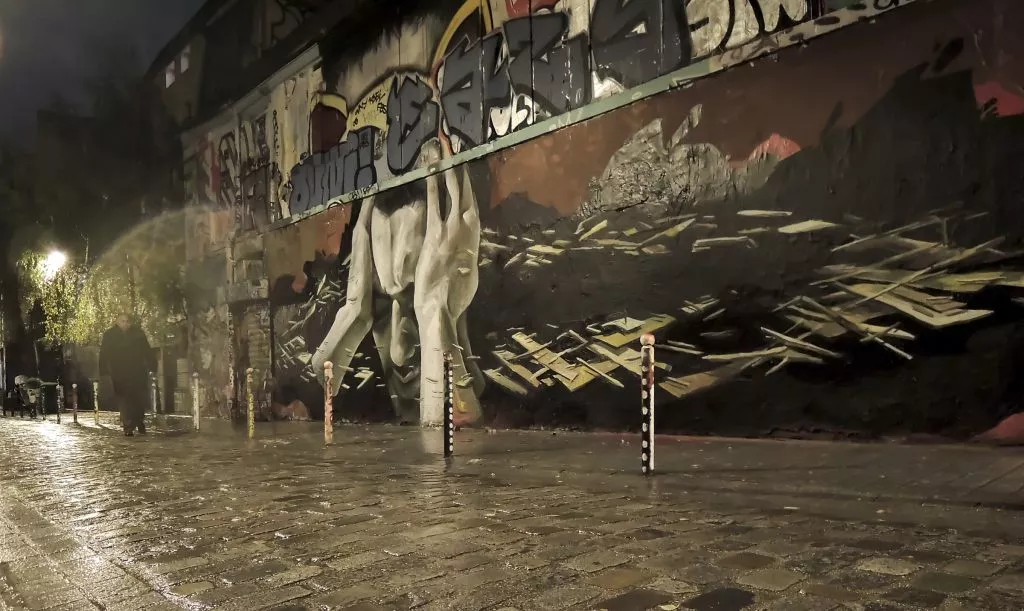
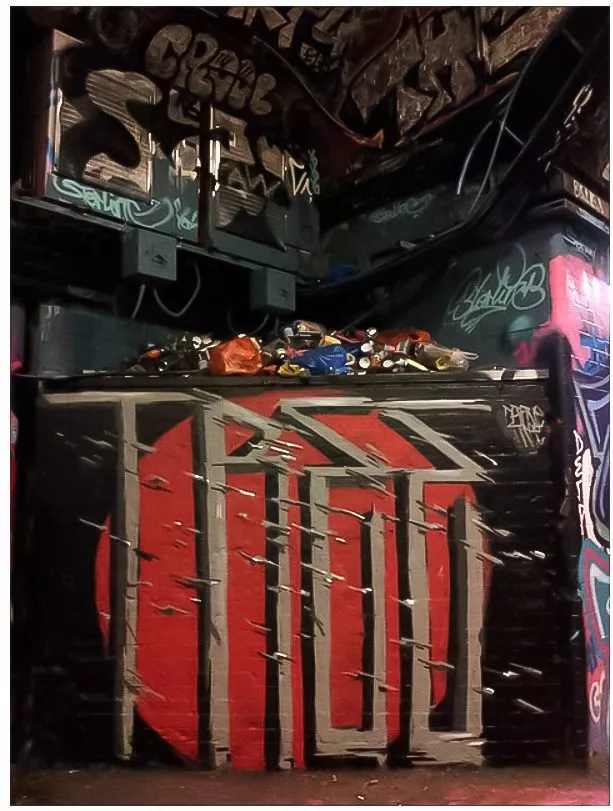
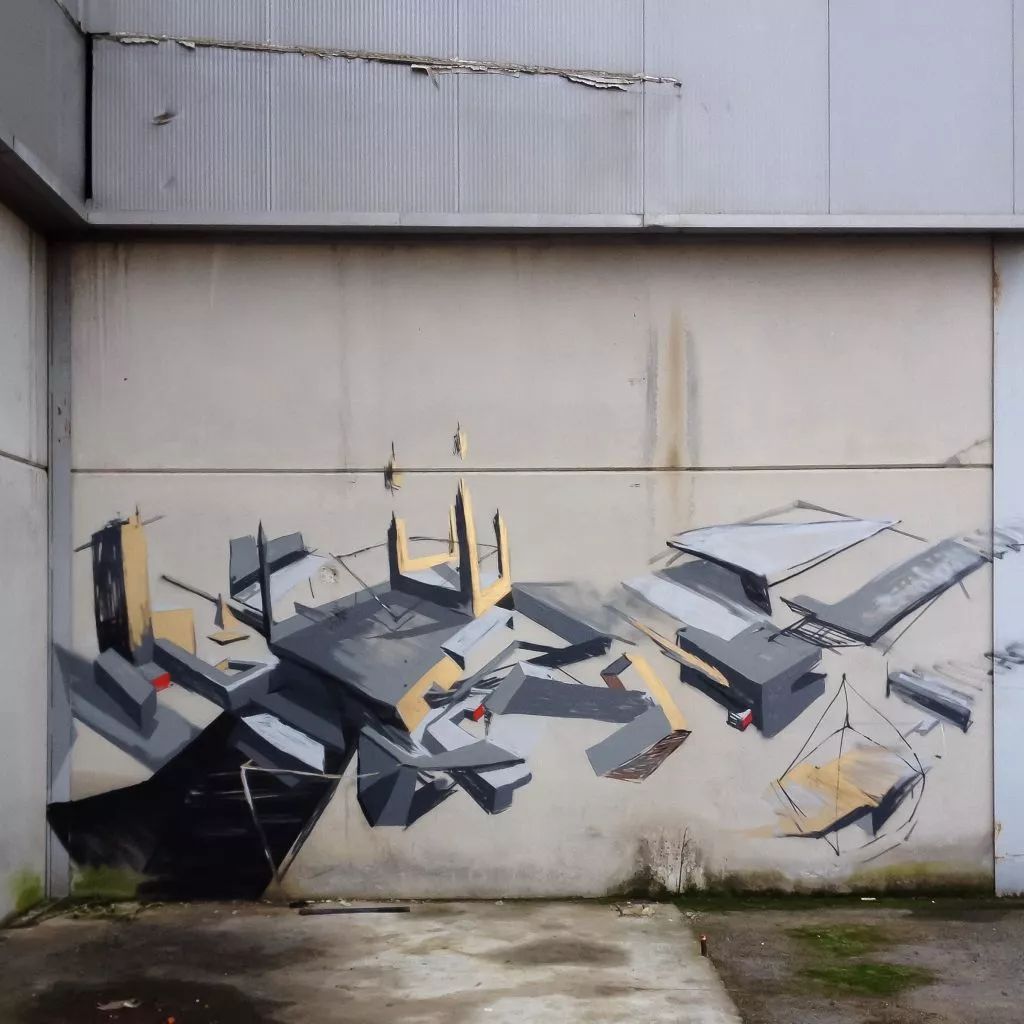
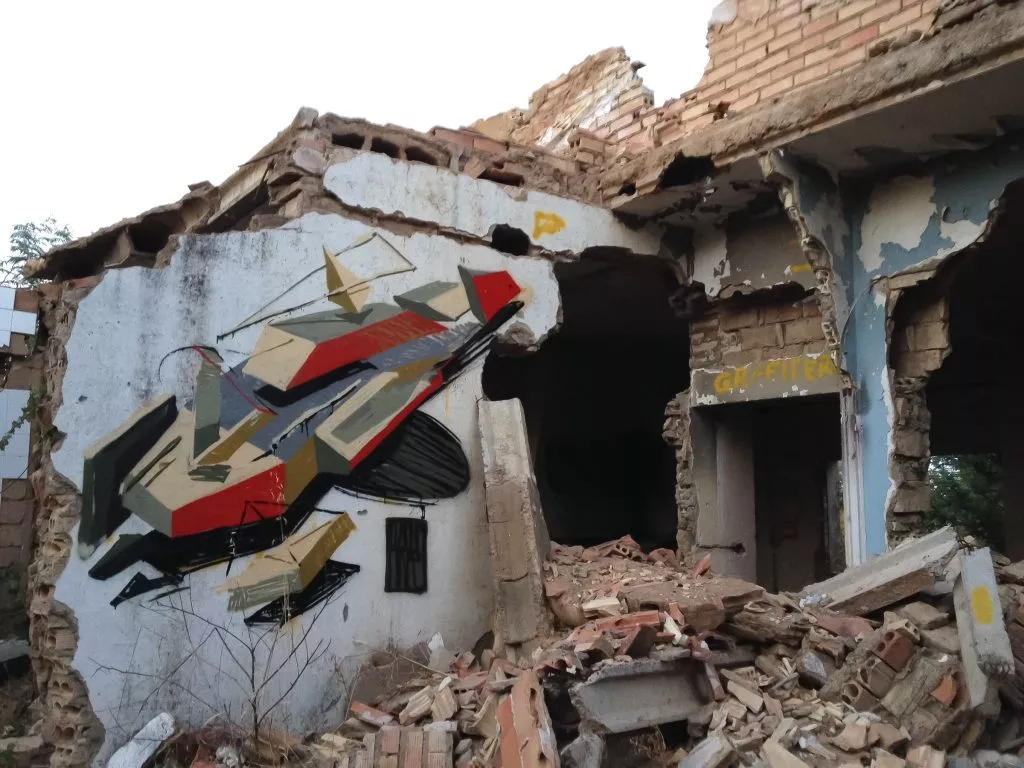
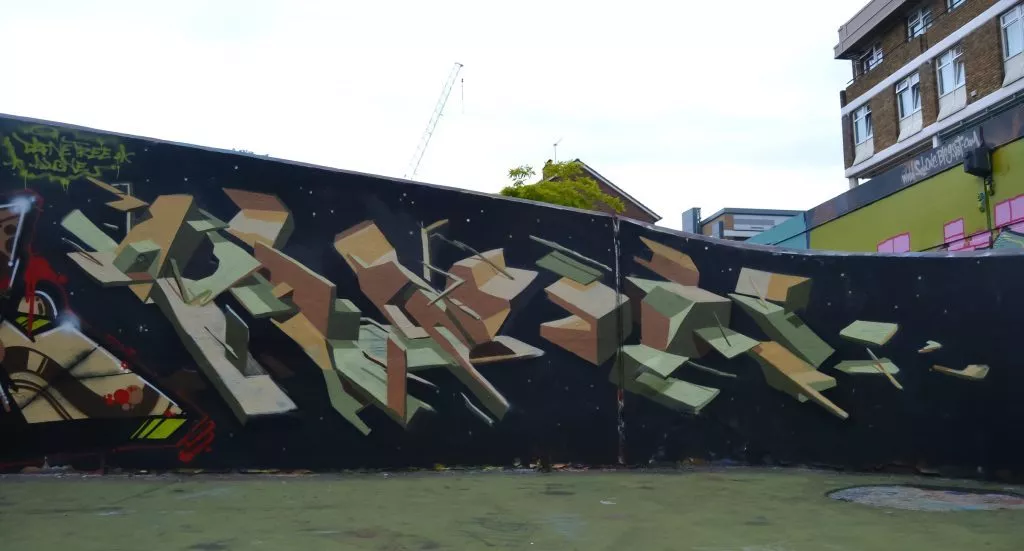
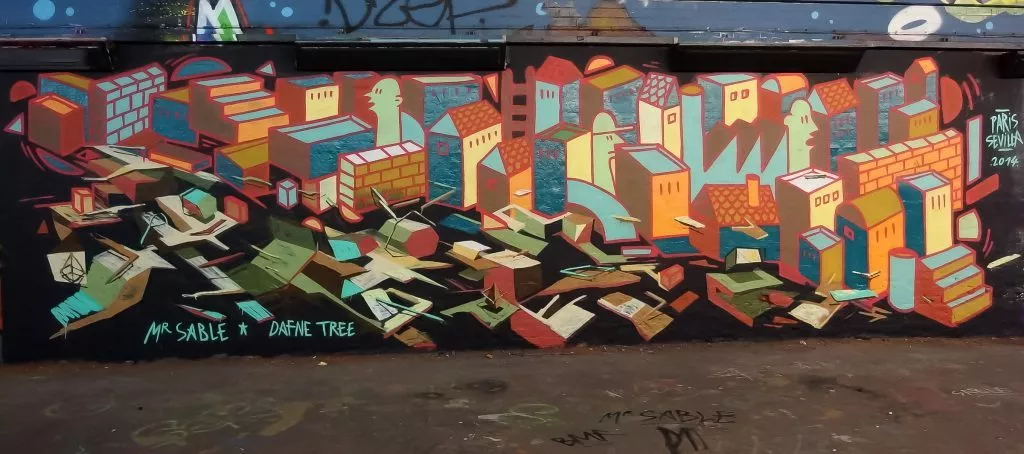
Finding places for her painterly practice
In 2015/2016, DAFNE moved to Valencia where she still lives today, commuting between there, London and Seville. In Seville she had already some writer friends, like SRGER, who were also connected with writers in Valencia, with whom she connected. At the Taverne Hall of fame in Valencia and next to the waterways, she painted with LAGUNA from time to time. Around Valencia she discovered many ruins and abandoned factories when she was riding her bike and started to paint in lost places most of the time alone. In the streets she painted mainly smaller pieces with some writer friends at different locations and cities where she travelled. But she got obsessed with the architecture and ambiance of massive abandoned places for painting. She even felt fear sometimes, she said, alone in a huge empty place, where the structures, and the roughness of some architectures seem to be threatening, a strange feeling of decay and emptiness, where you can indeed feel small and vulnerable as a human.
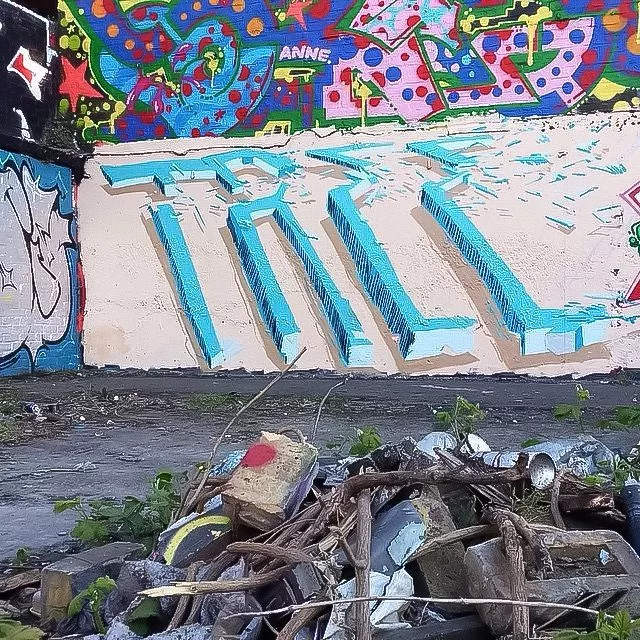
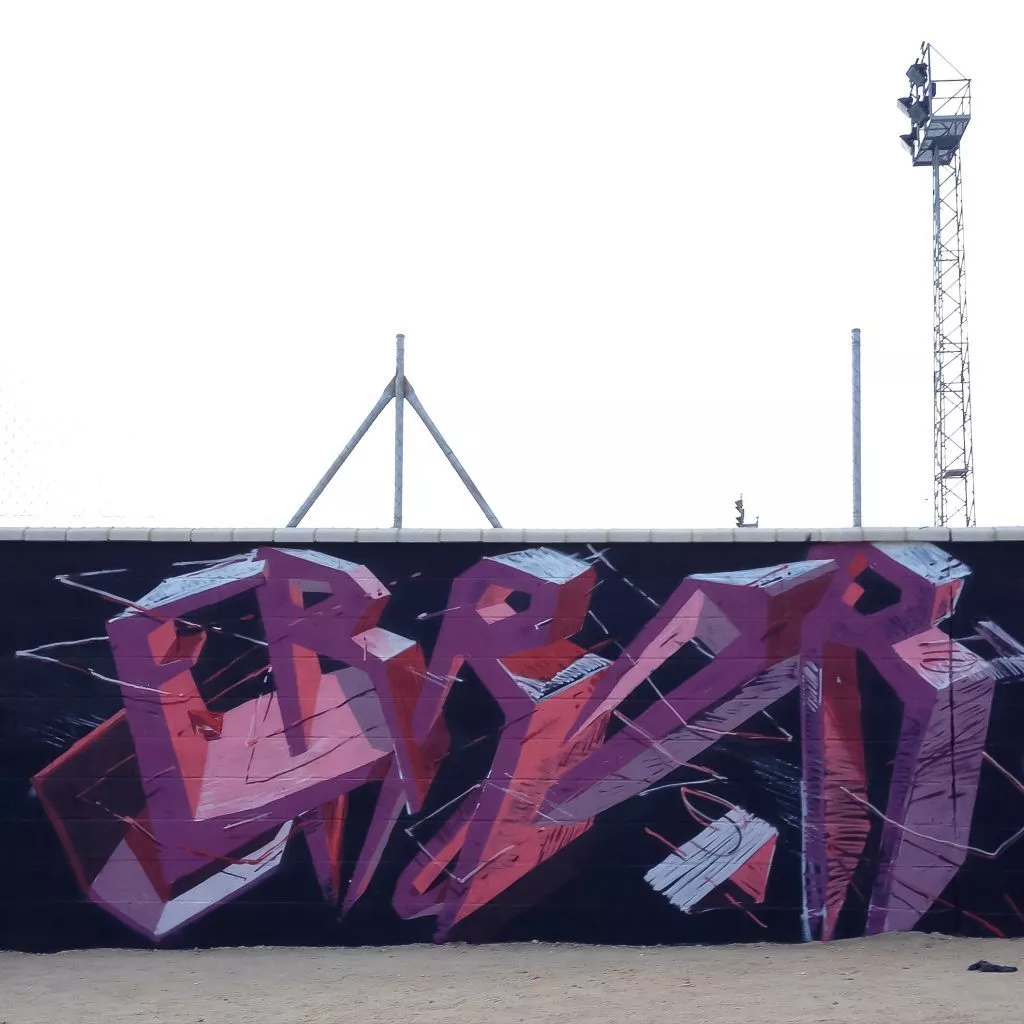
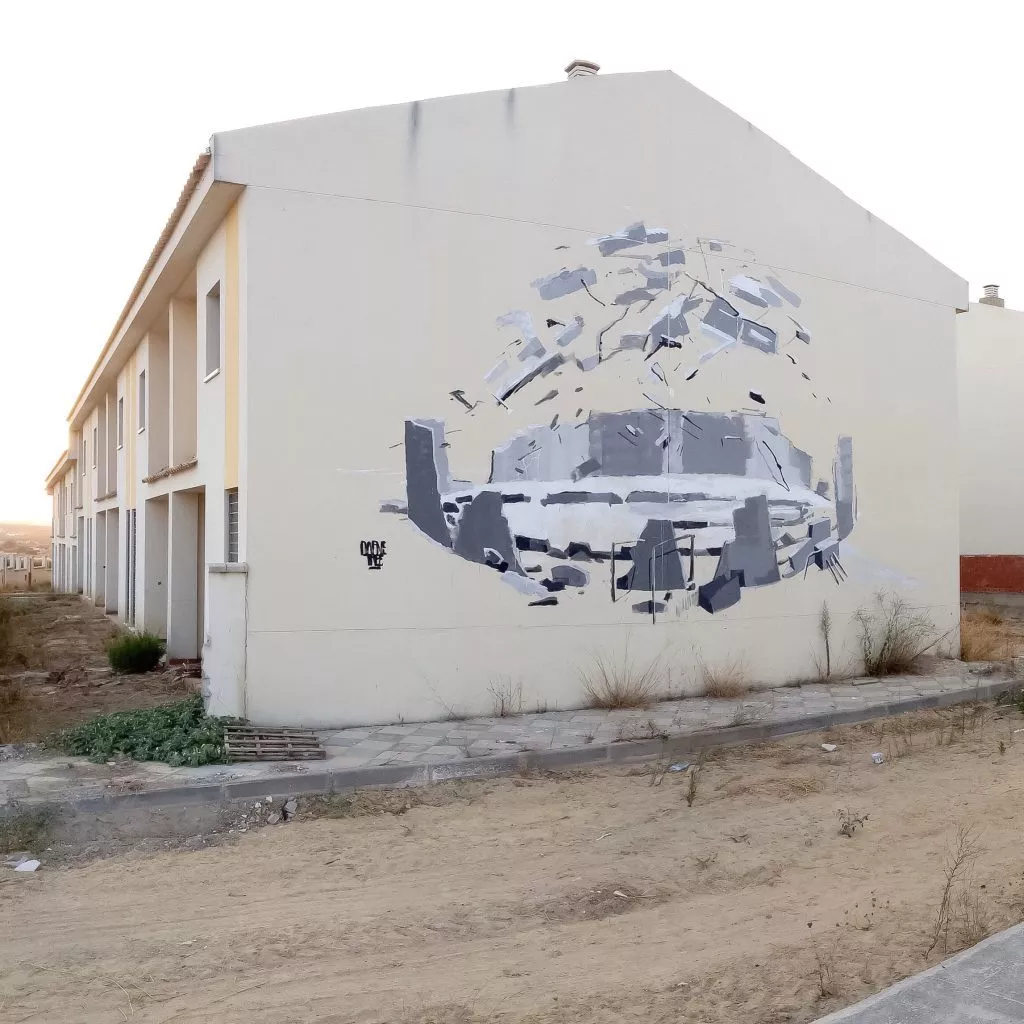
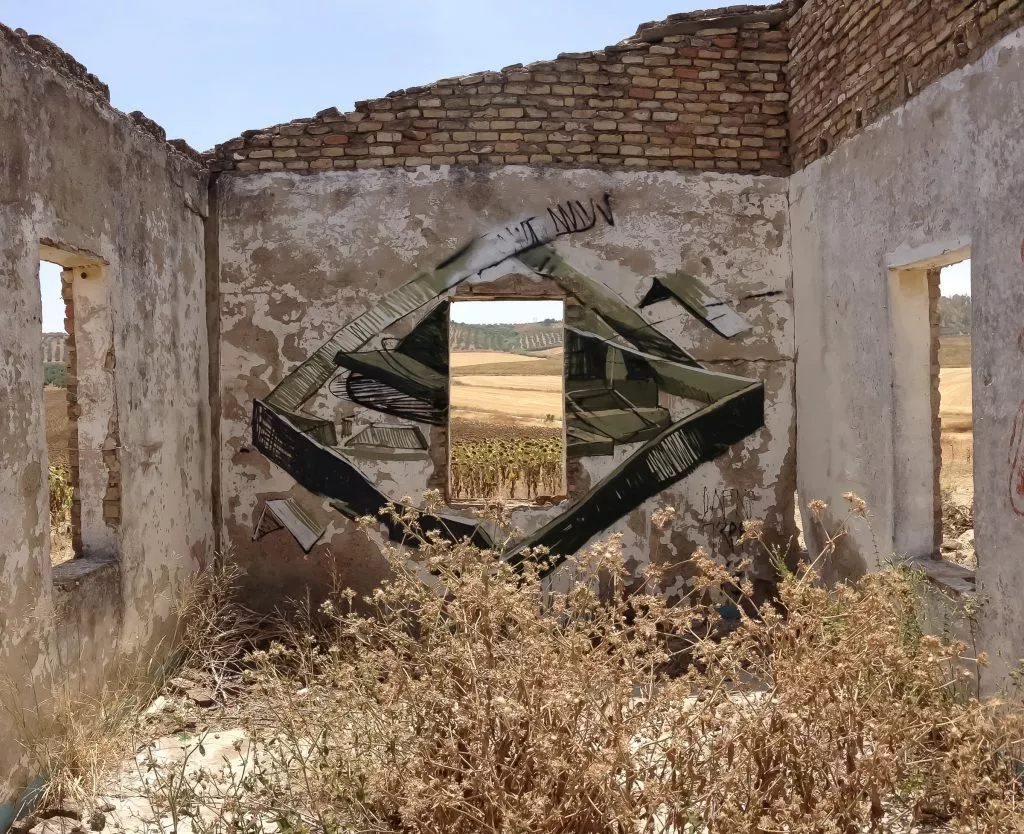
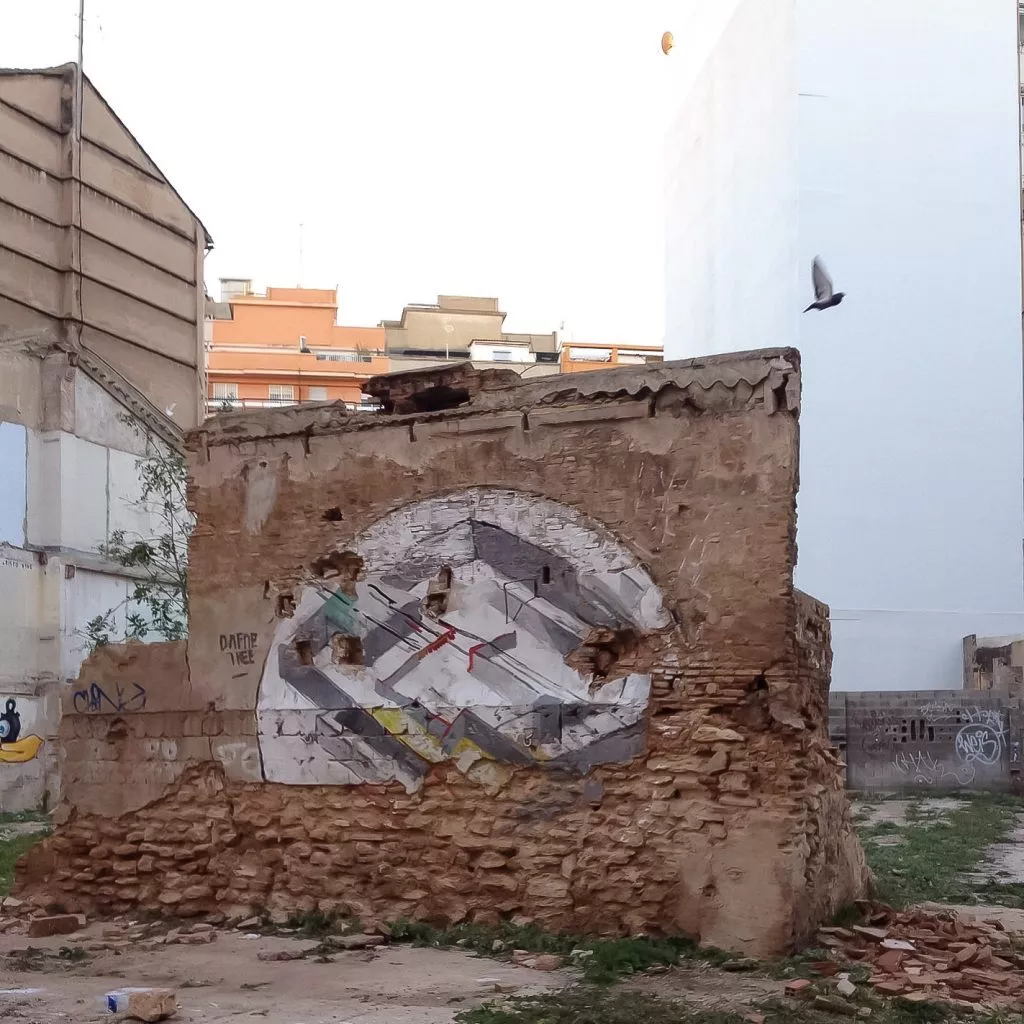
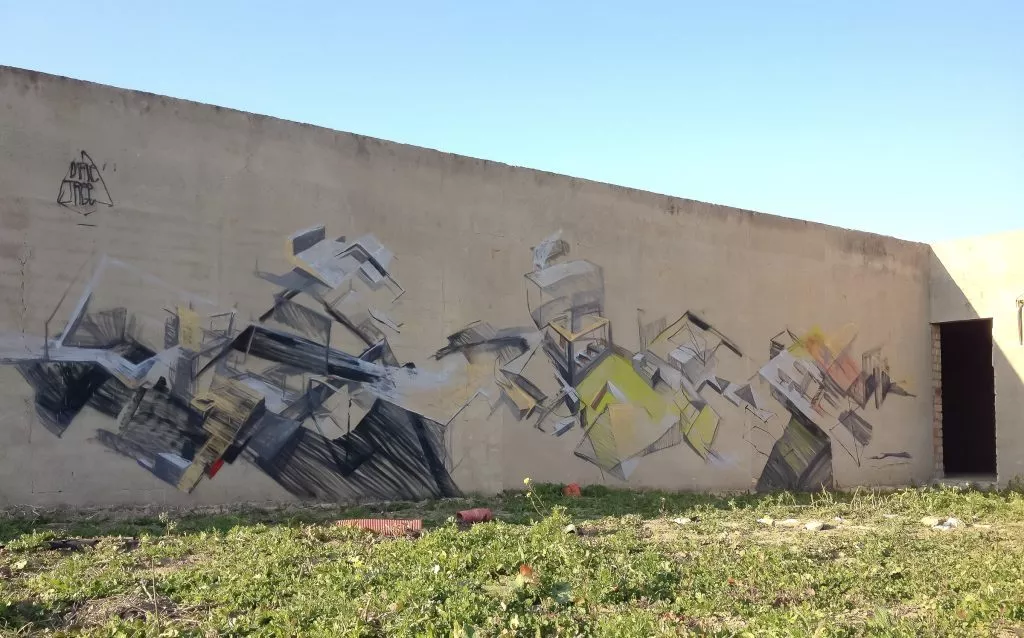
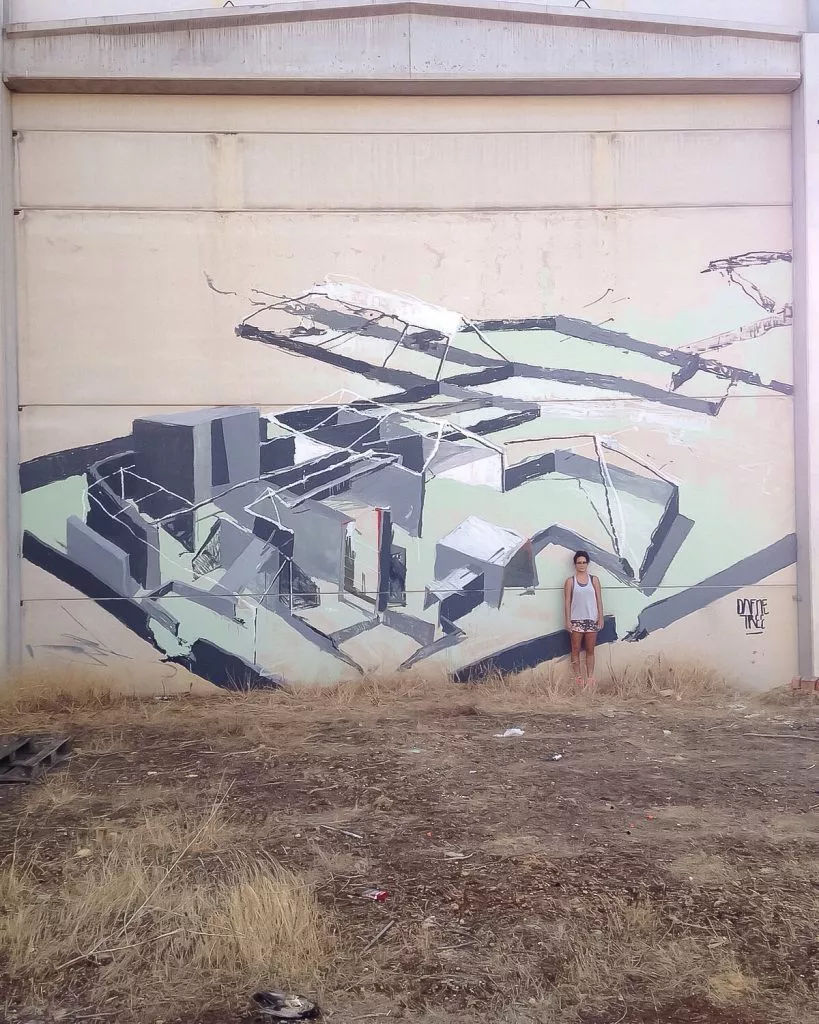
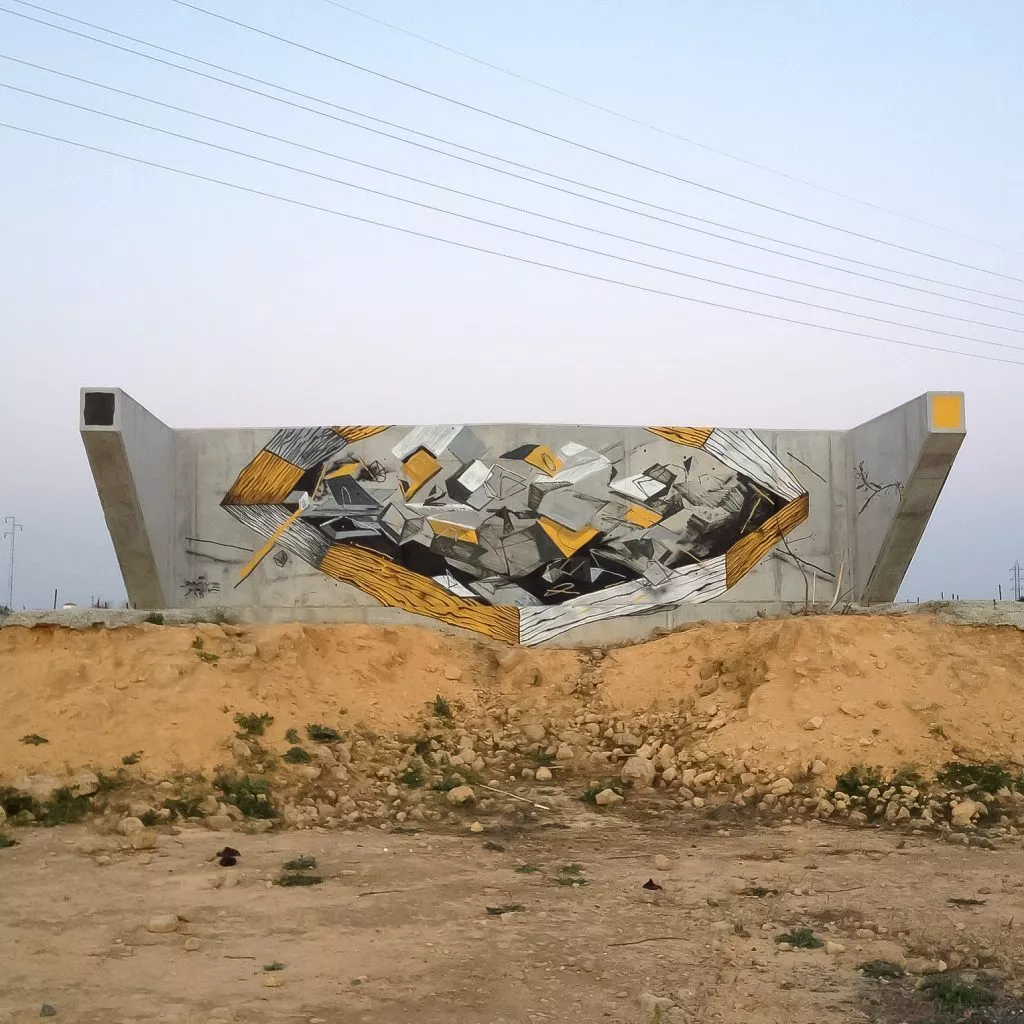
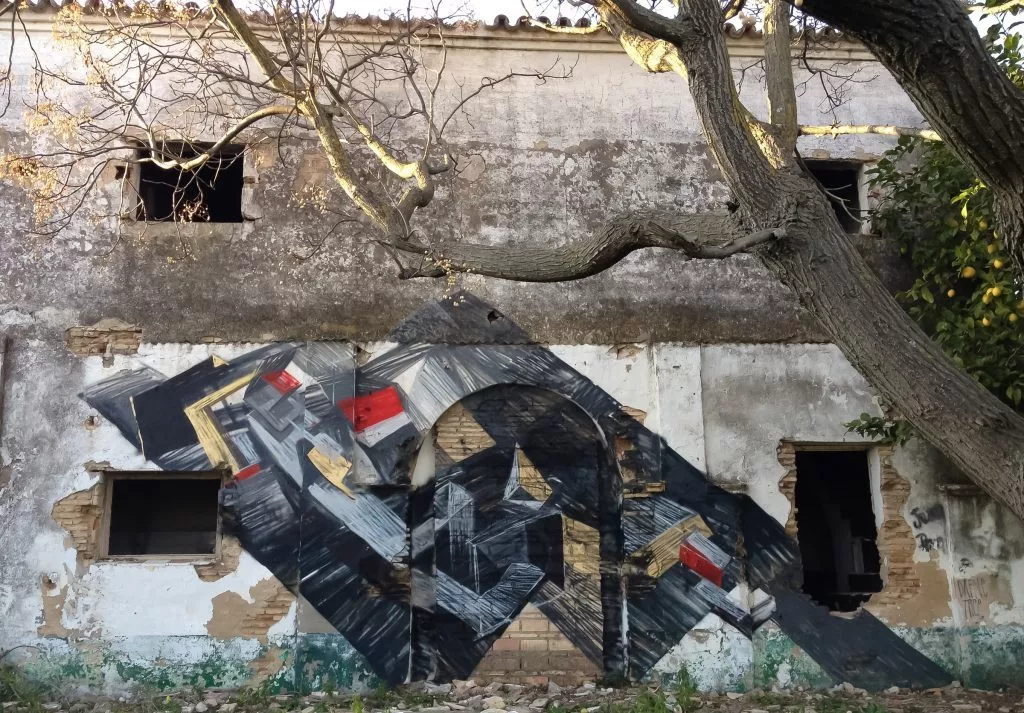
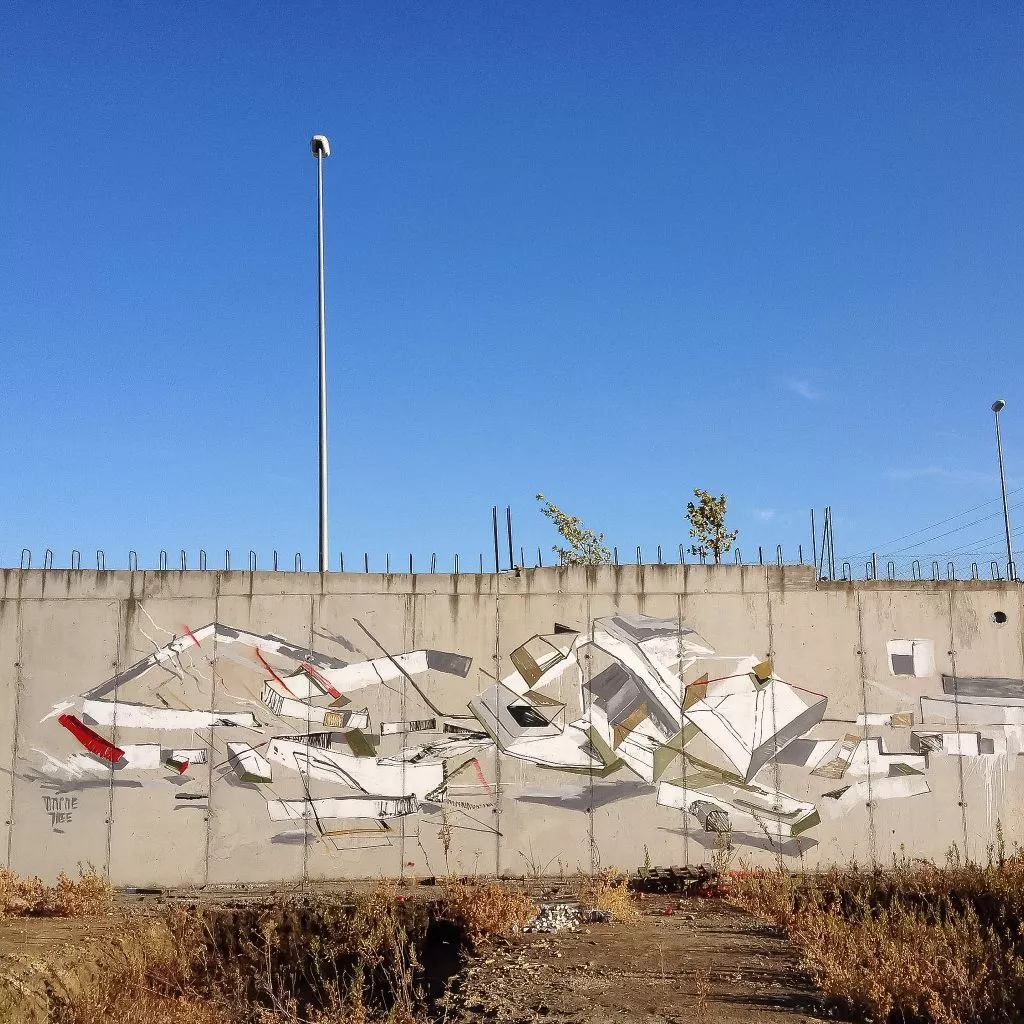
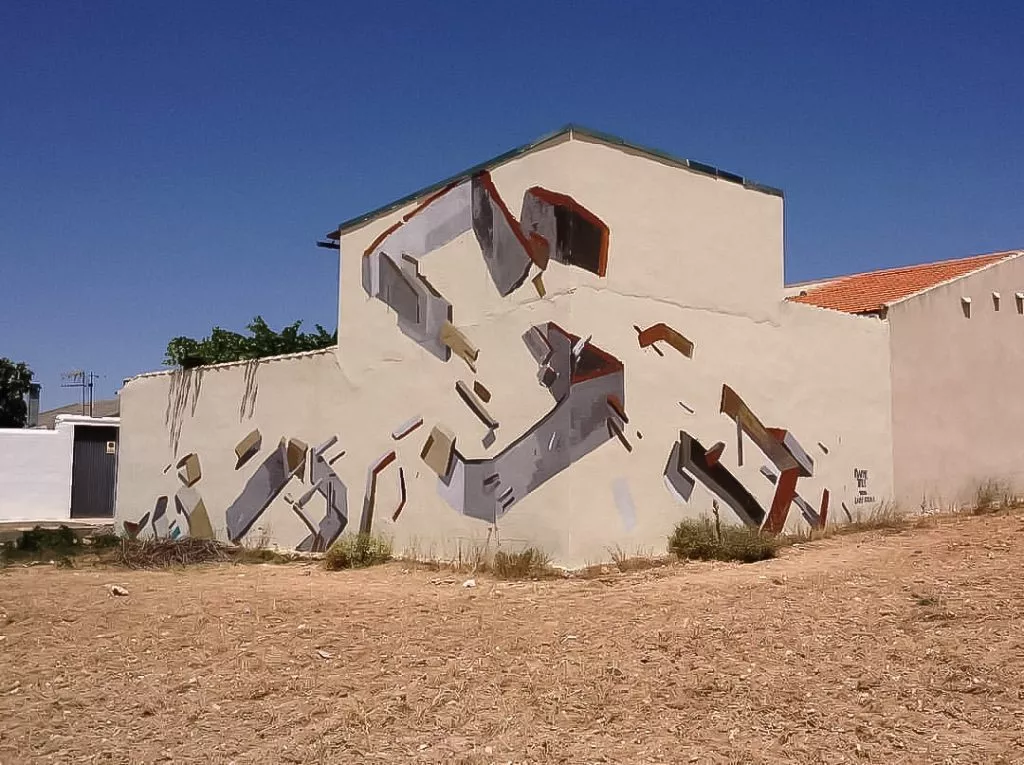
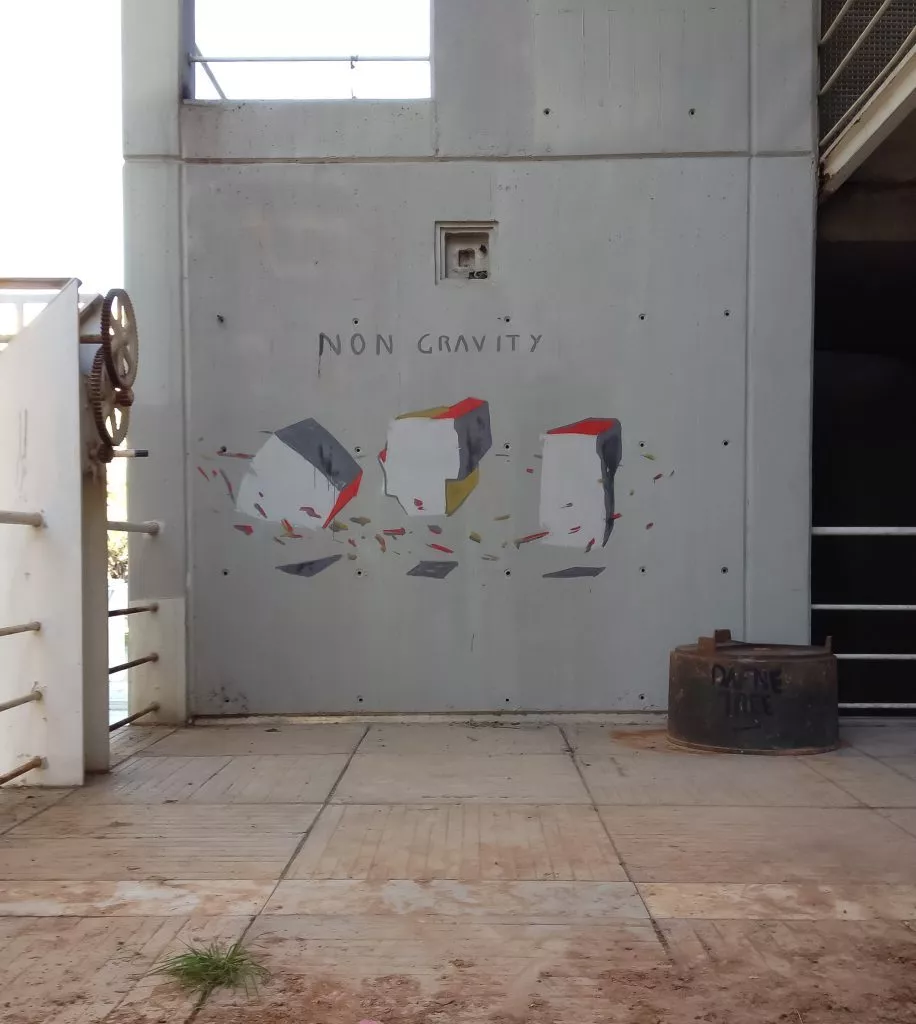
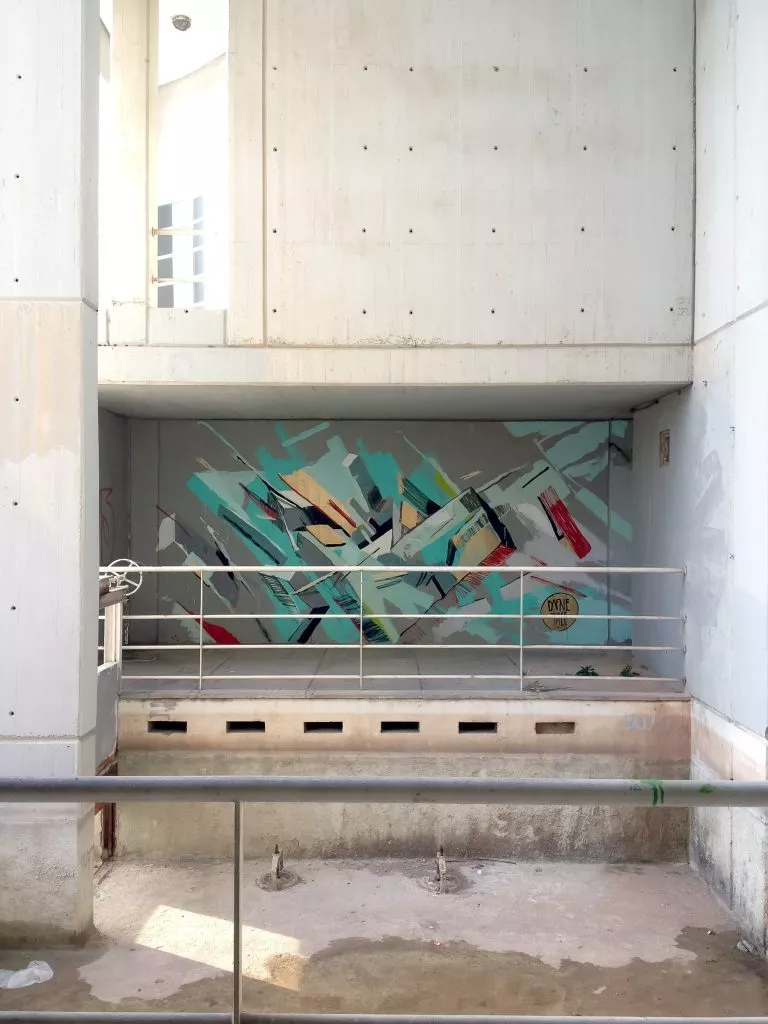
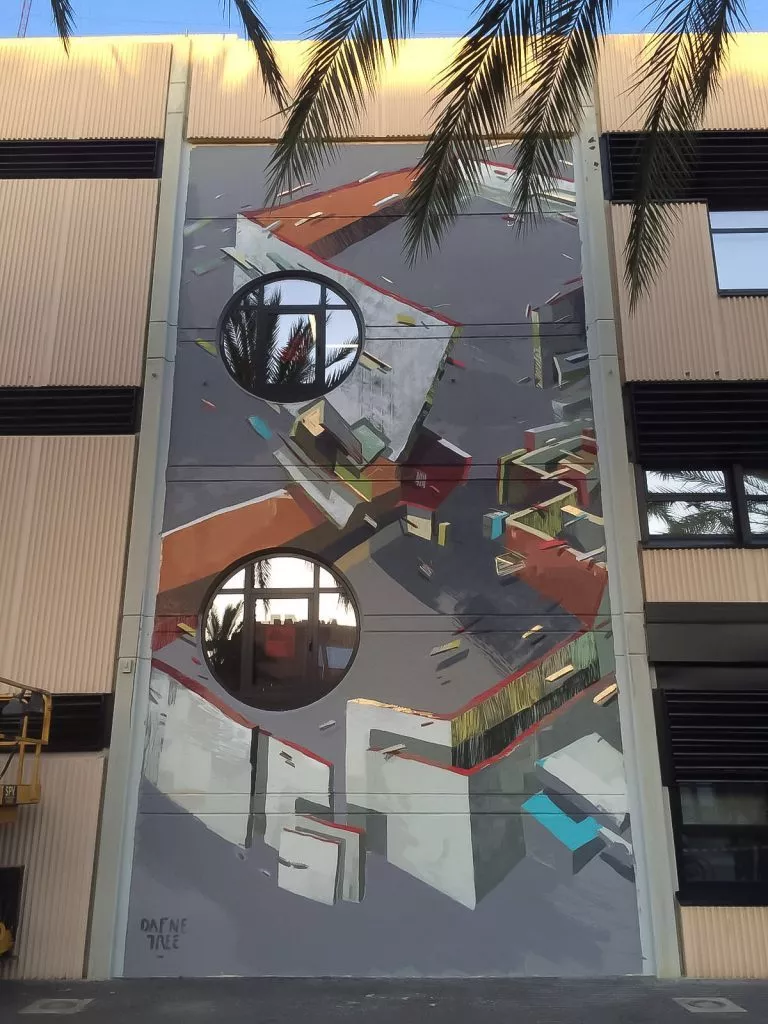
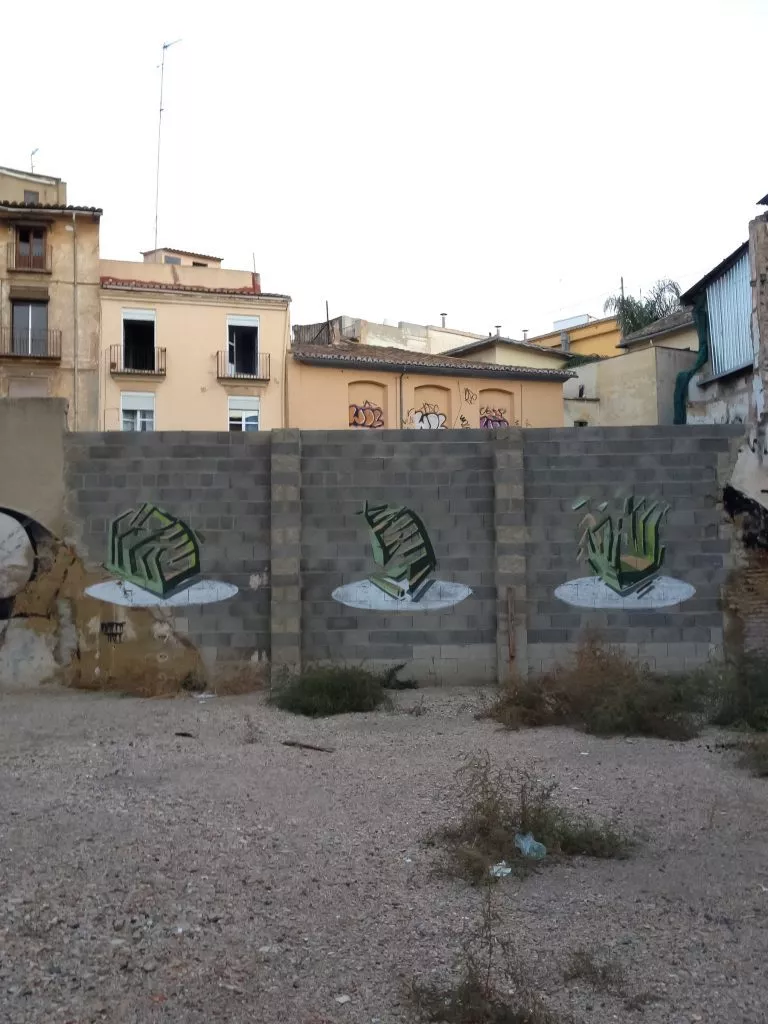
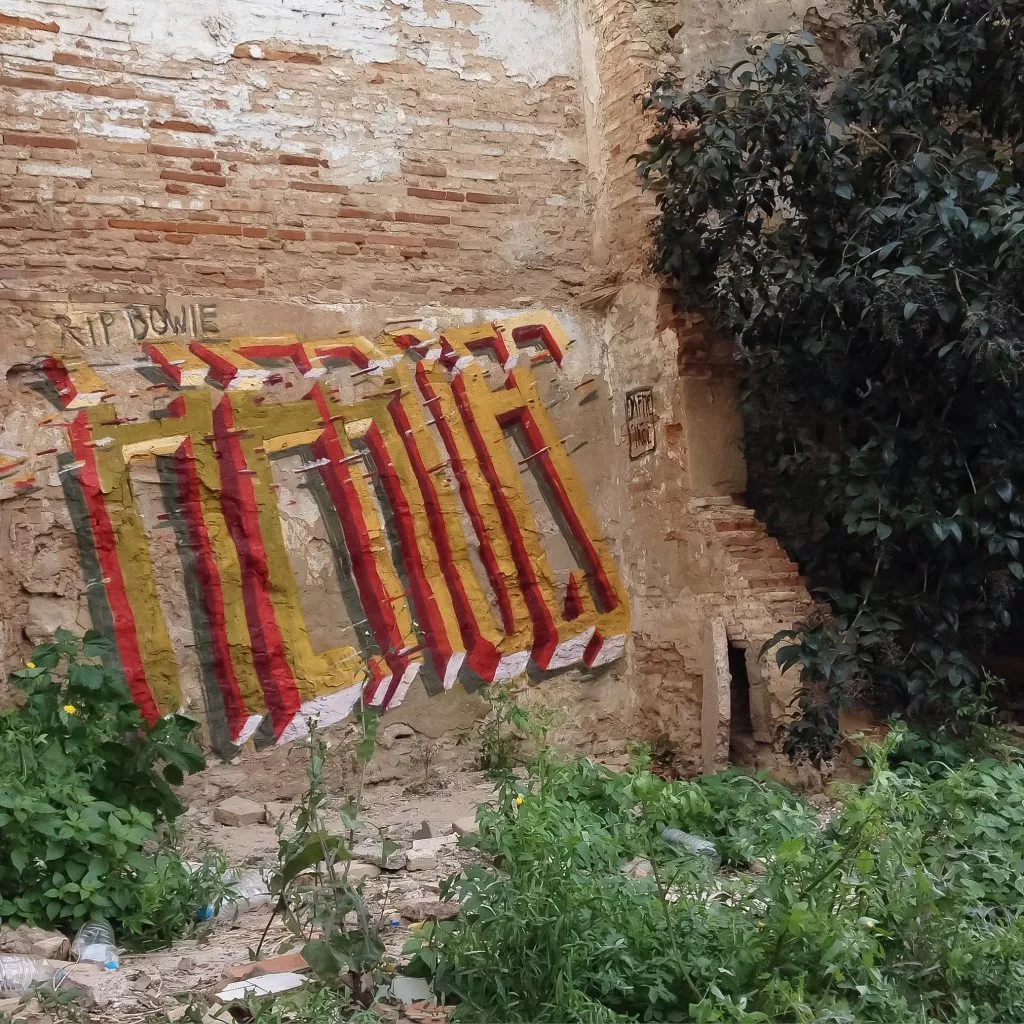
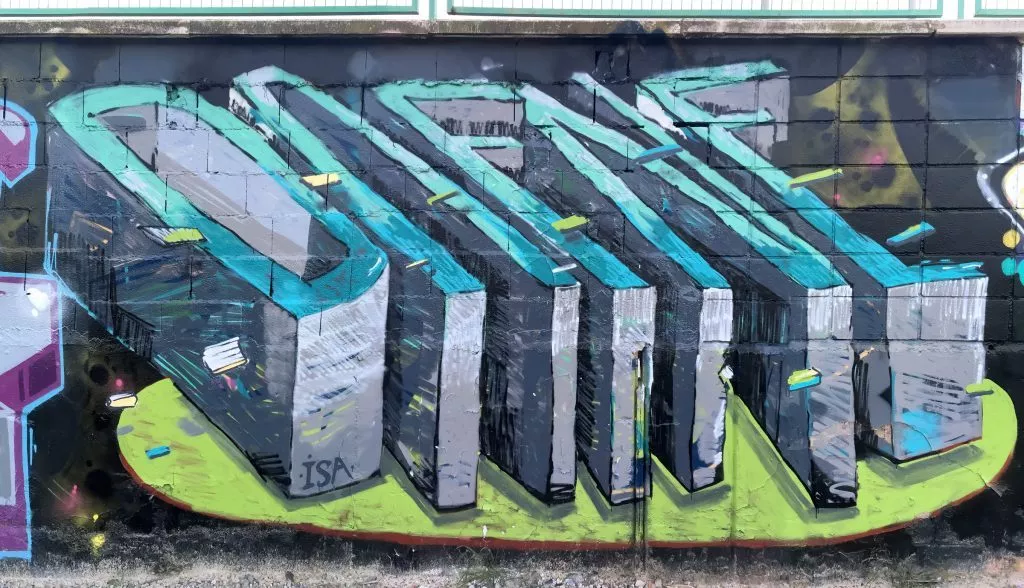
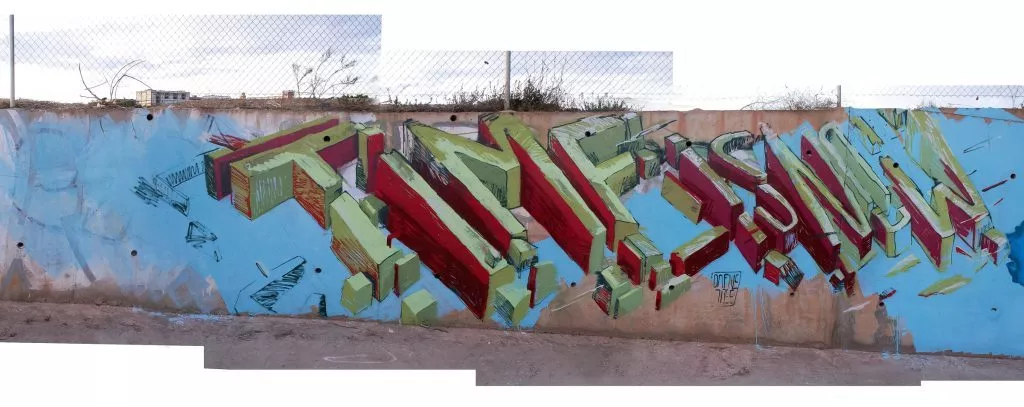
Processing the romantic aspect of buildings in decay
Most of the time DAFNE Tree is looking for virgin spots, where nobody painted yet and where the the wall seem to be adequate for integrating her painted piece. She did a couple of smaller circle-paintings, like tondos, round or elliptical shades painted as a background, mostly in black, for painting a geometric composition on it. The round form is for her a way to disrupt with the weights of the surrounding rectangular architecture and create a space. In 2017, she started to paint these kinds of compositions in huge formats on facades of abandoned buildings. The dark round background had the effect of a huge hole in the wall, conveying the idea of decay and destruction. With painted architectural elements on it, it looks as a floating platform or level with an unfinished construction site. These wall elements seem to be or already in decay, like ruins or modern elements still in construction. Making a link between past architectures and unfinished modern buildings, DAFNE’s wall paintings on buildings in decay seem to be from the past, but look modern, even futuristic and therefore timeless. Inspired by the rural landscape of Valencia with its industrial abandoned sites and of unfinished houses in Andalusia (construction were stopped after the crisis in 2008 and never got finished), she mixes elements of urbanism in decay.
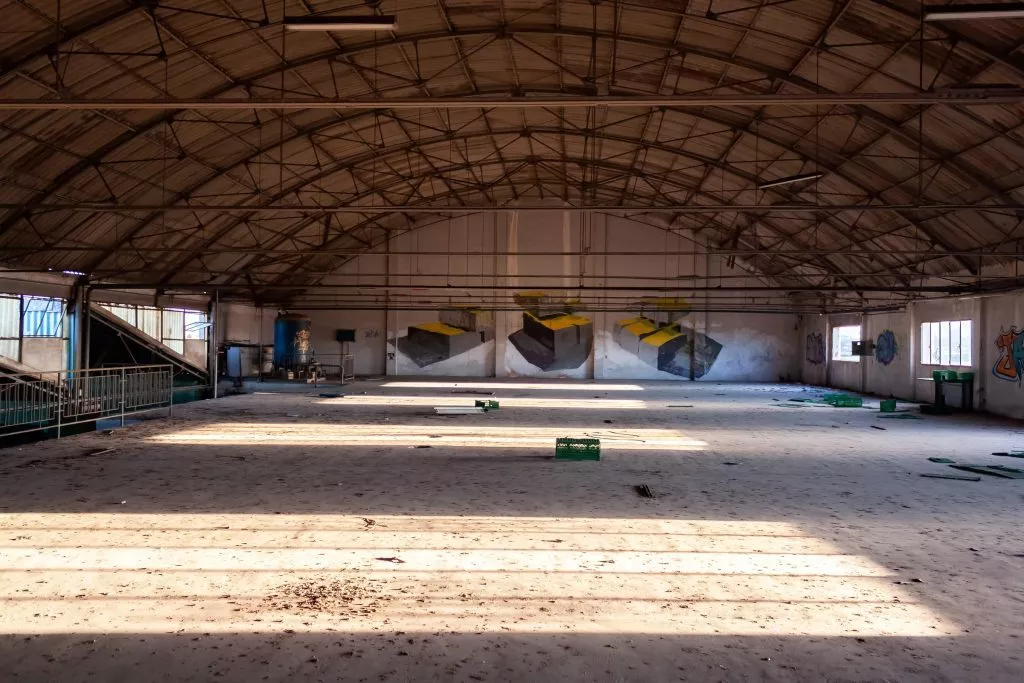
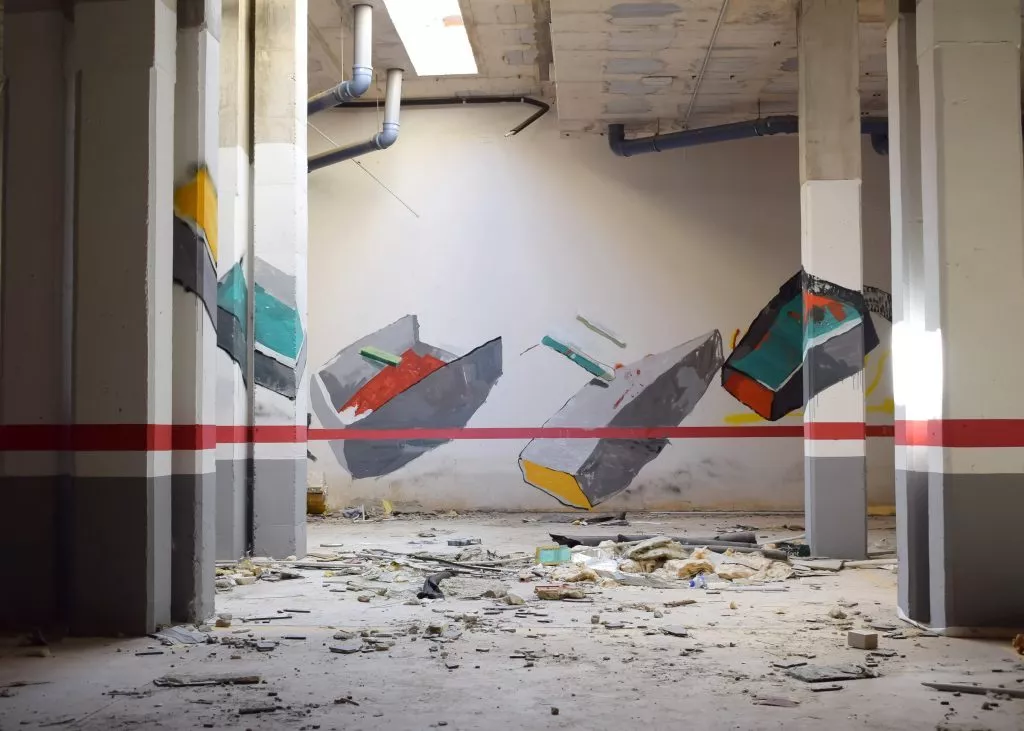
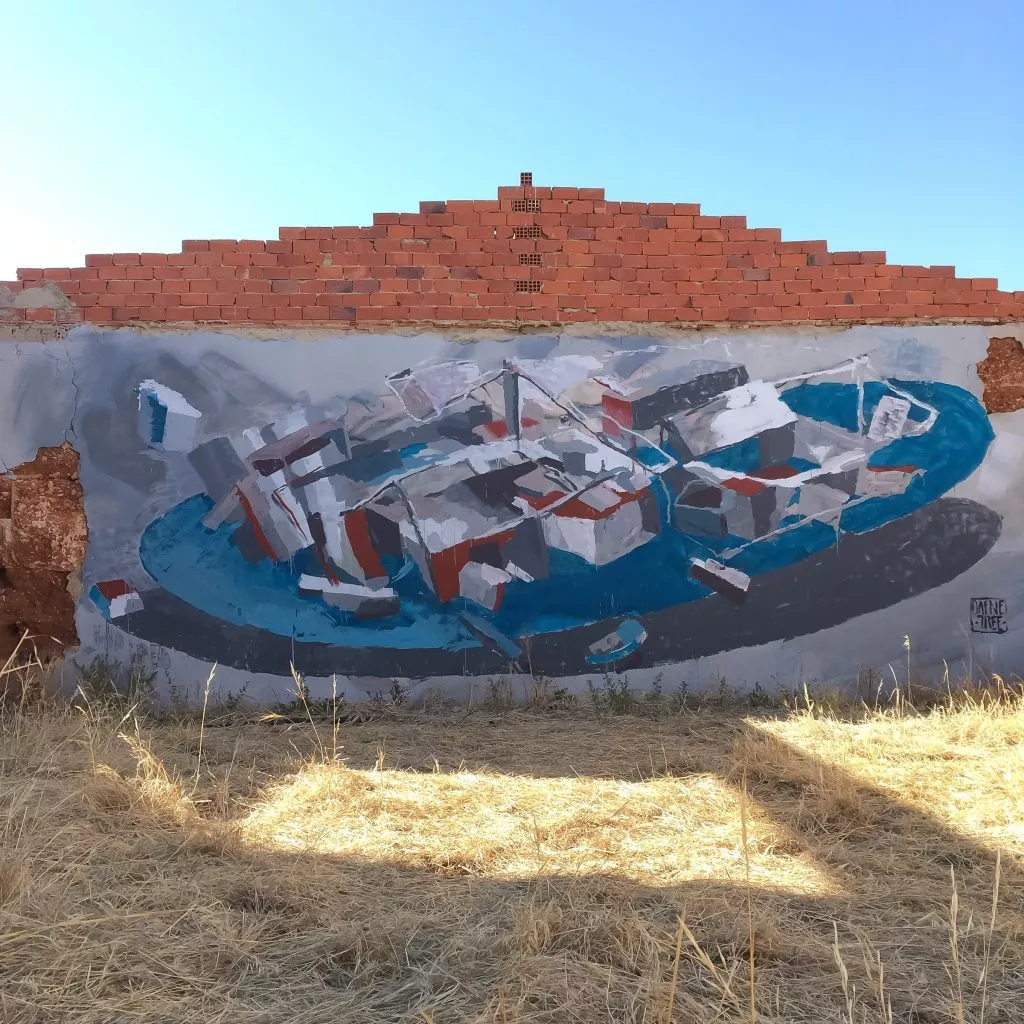
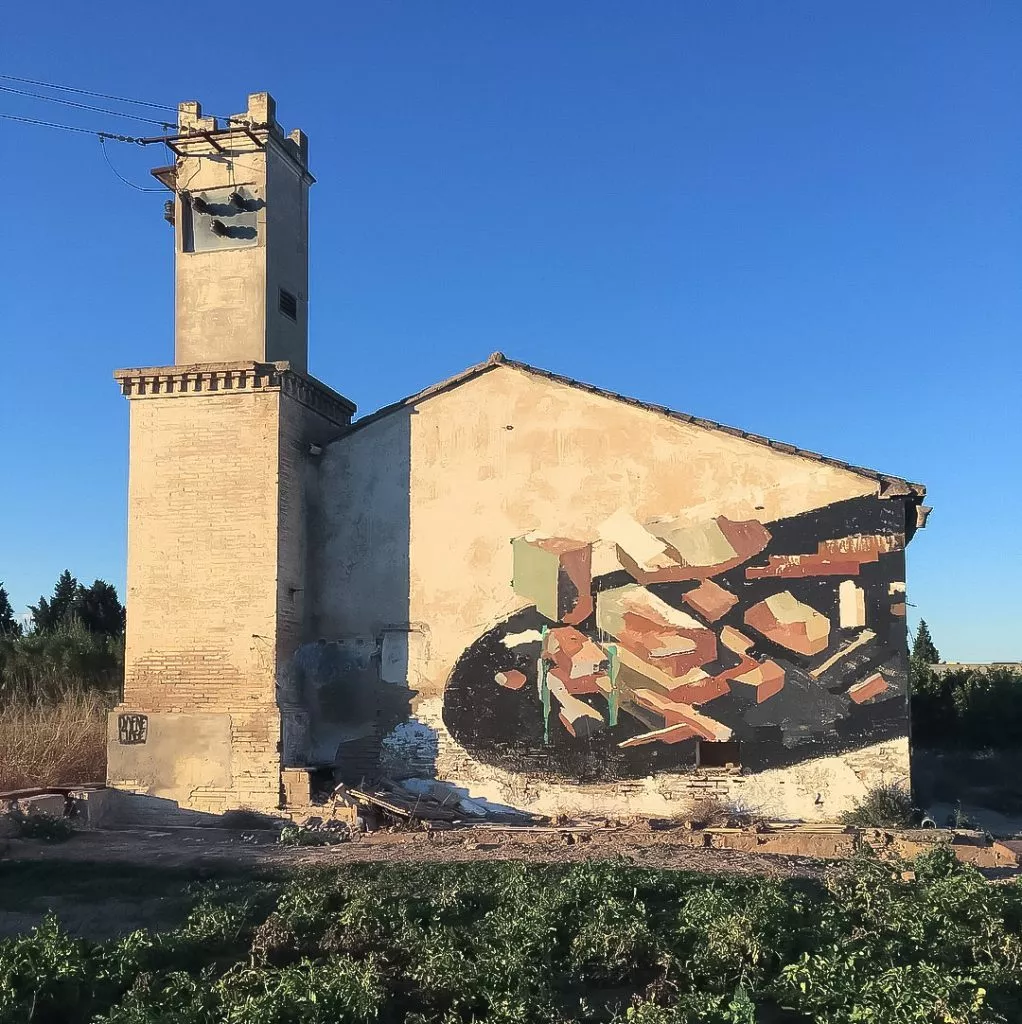
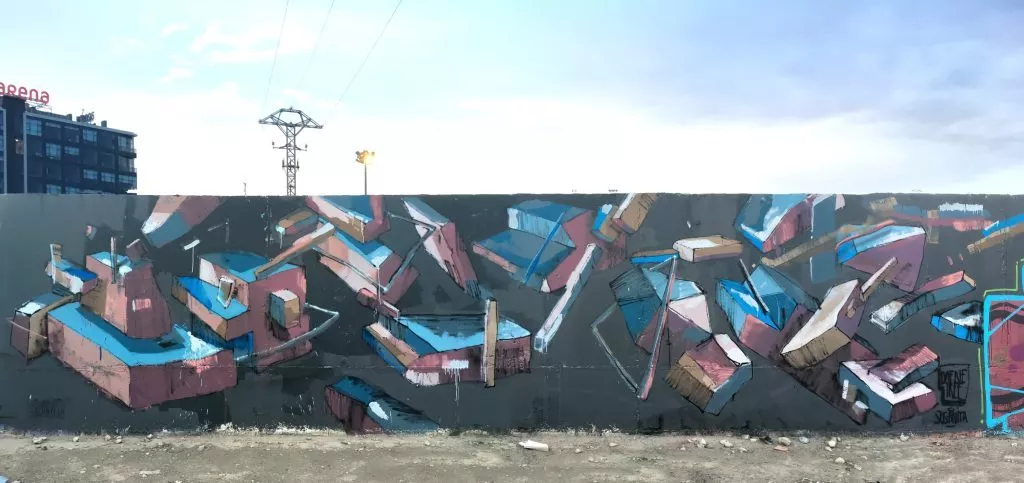
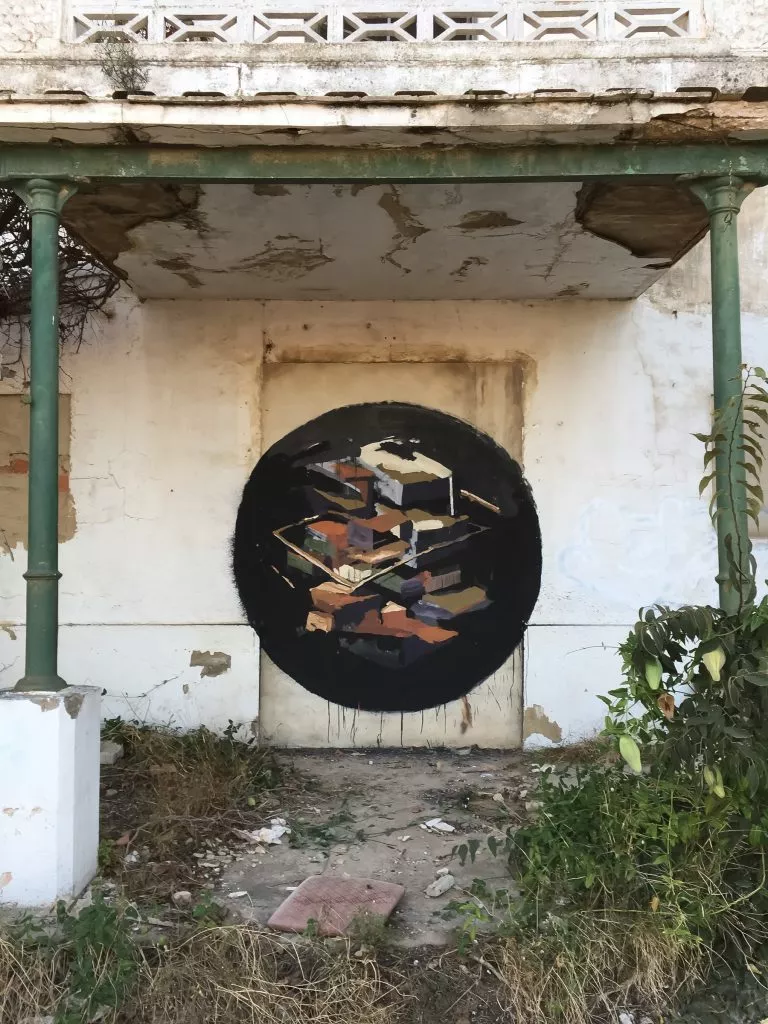
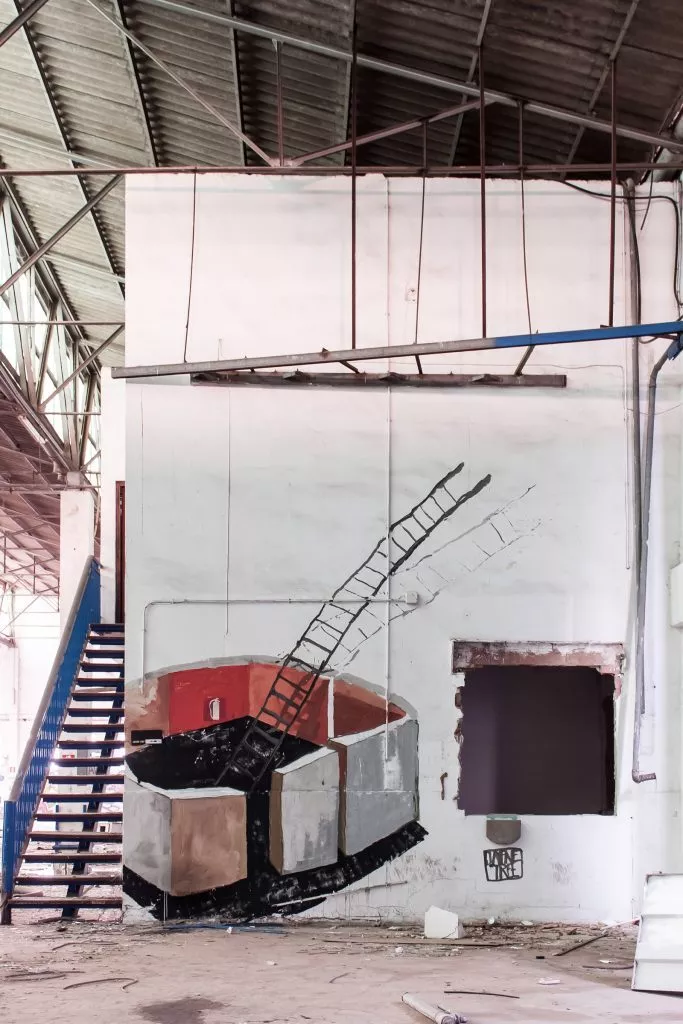
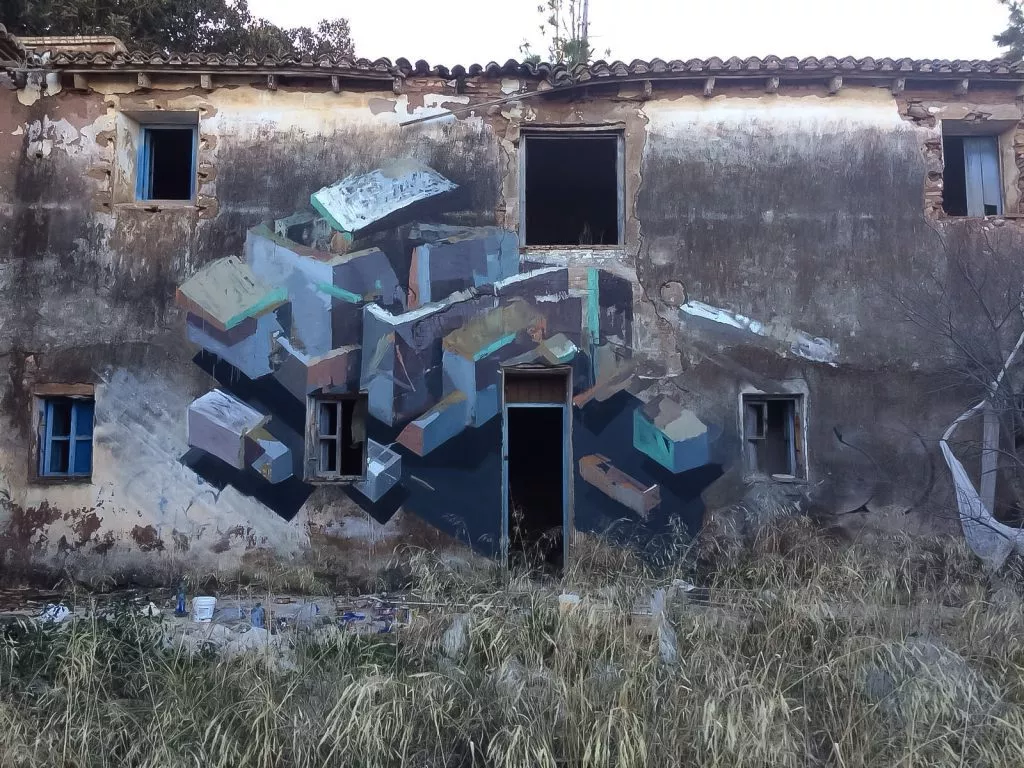
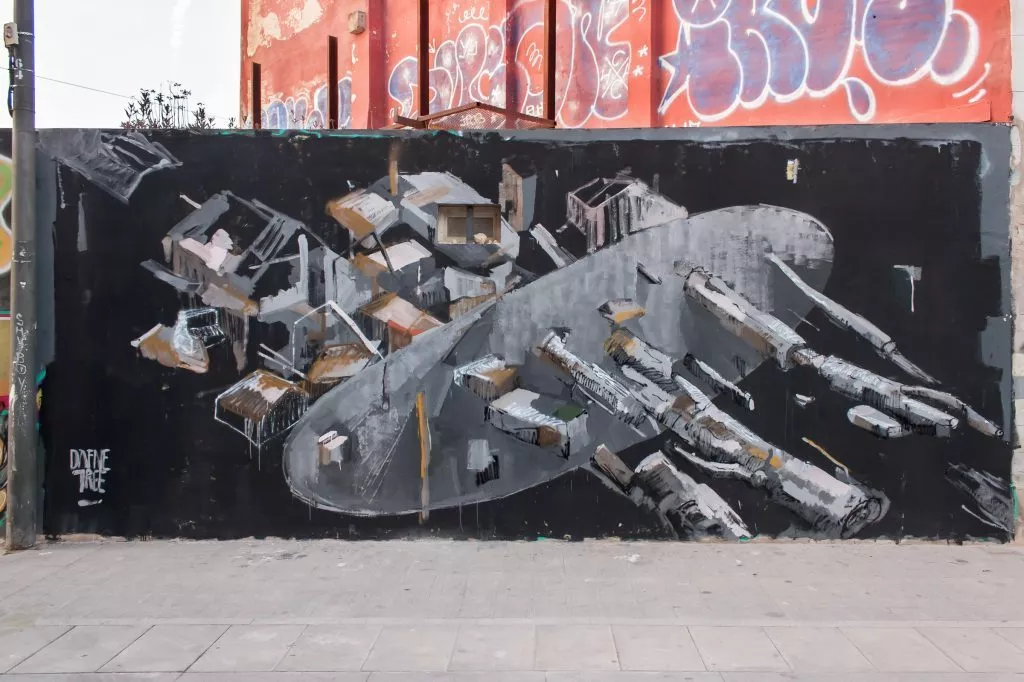
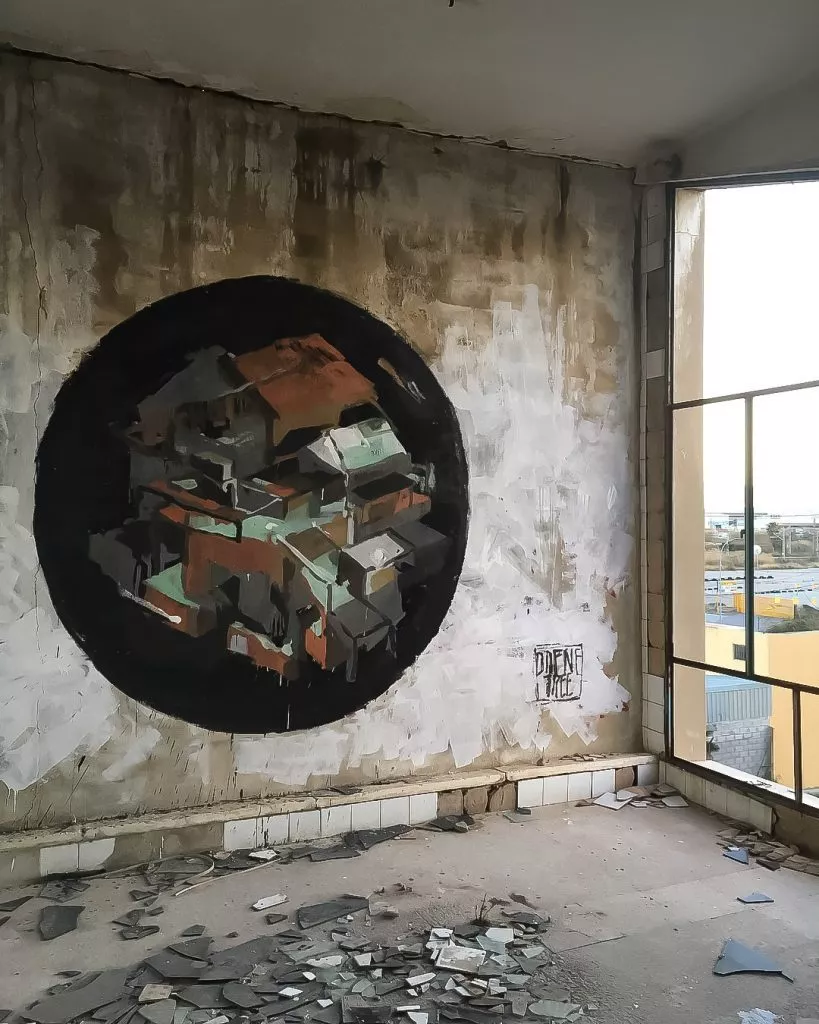
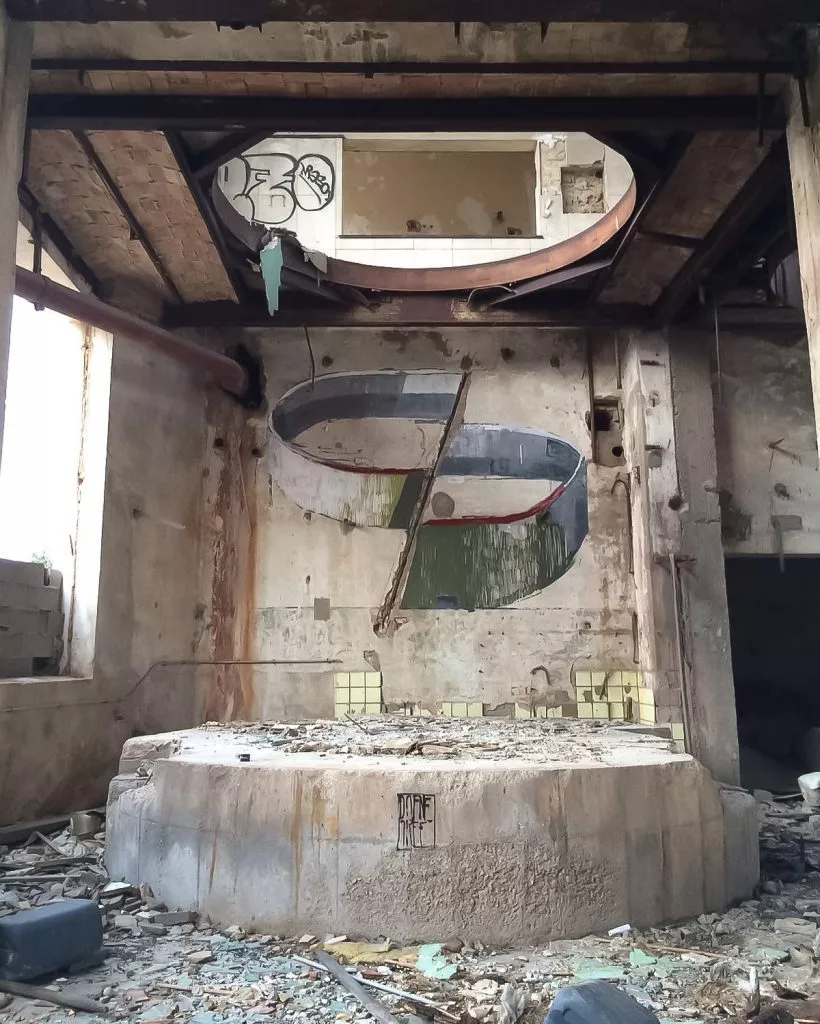
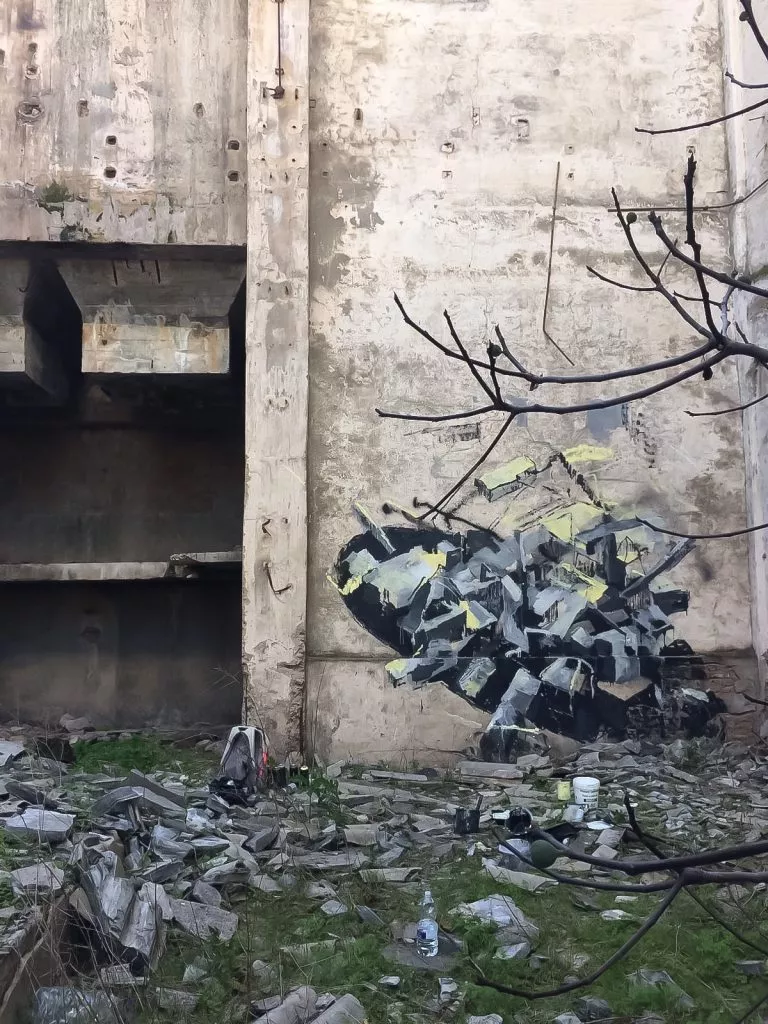
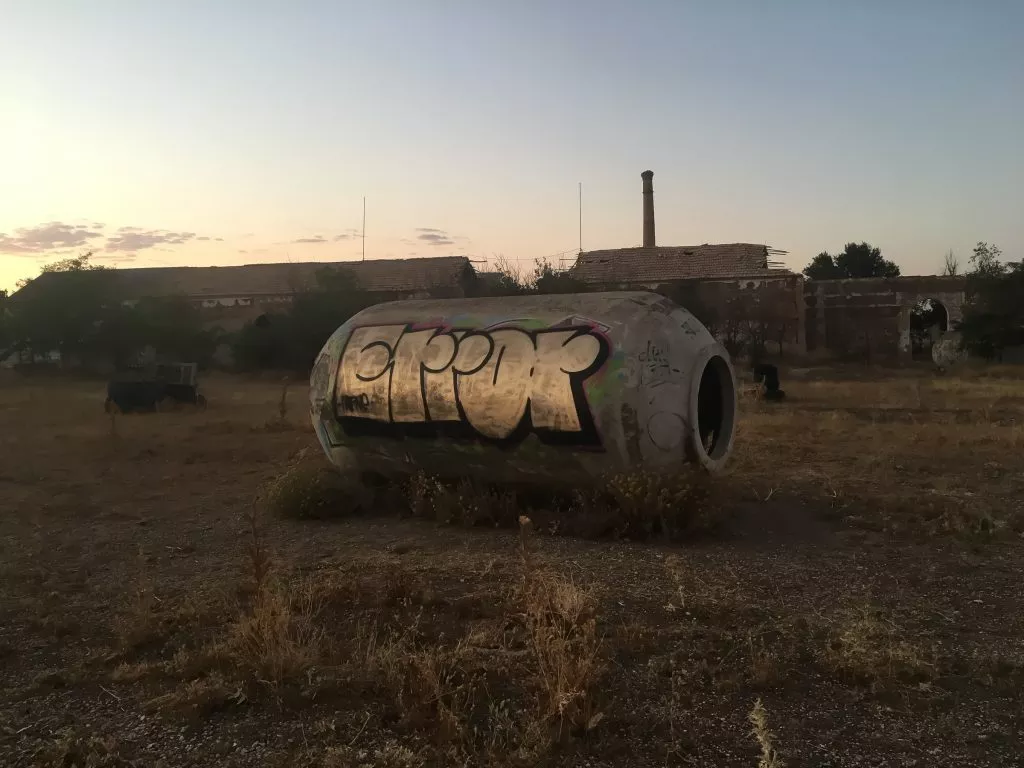
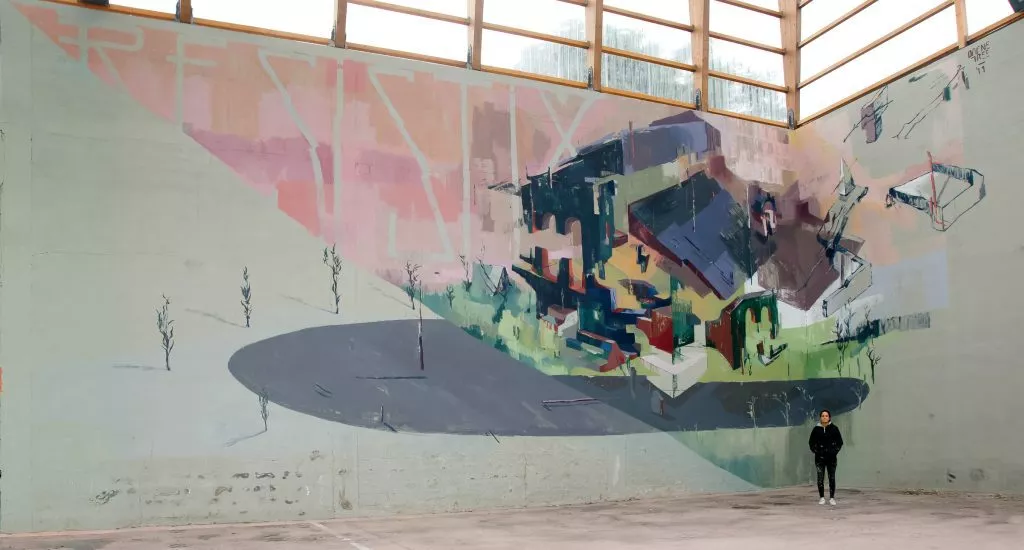
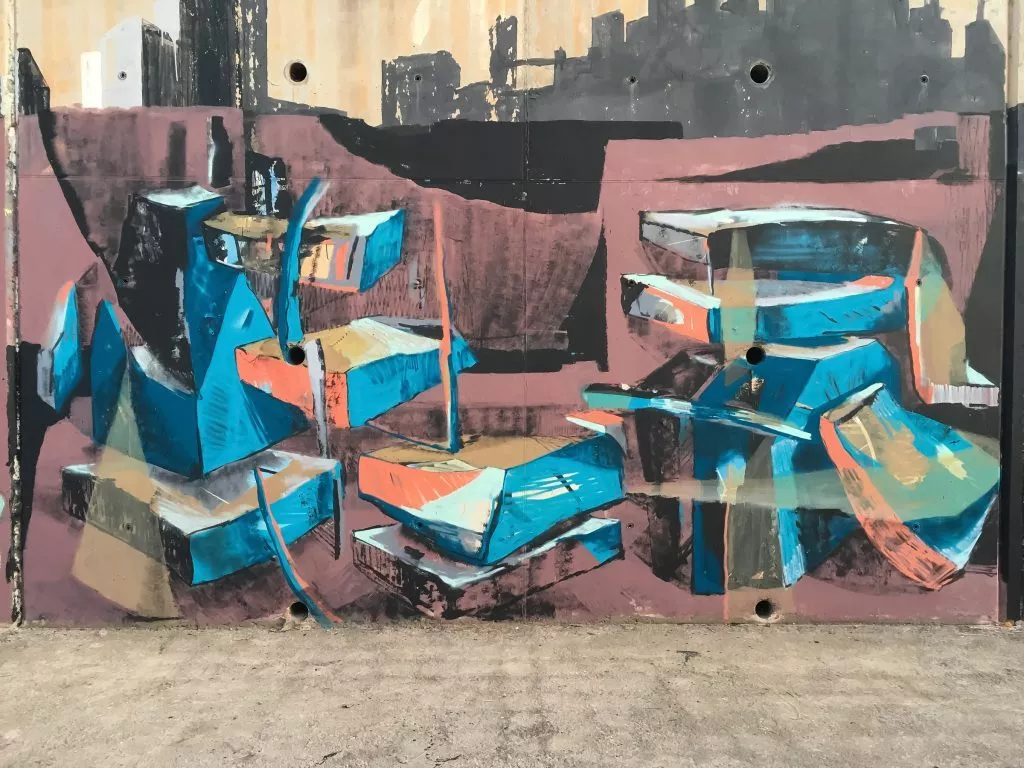
In other works, DAFNE Tree is integrating architectural elements of ancient civilizations, walls that look like massive stone, like megalithic dolmen or roman archeological sites. Using it mainly for lettering, her letters seem to be out of stone, painted in a sketched light way with an unfinished pictorial aspect. The depiction of building elements of past and modern human civilizations in her murals are conveying the idea of destruction, addressing topics such as processes of change, depopulation and remembrances. Looking like archaeological sites or maps for modern unfinished construction sites, seen lightly from above, the influence of architectural drawing is visible in her work. Other compositions are airier, the different elements like building blocks are painted with spacing, or in a row, forming a chain or a net of geometric abstract shapes seeming to float in an open space. Her paintings have the aspect of modern geometric abstract paintings, but are figurative as well. Her depiction of traces of sedentary civilizations in her paintings situated in a deserted rural environment are surprising, inviting and want to be decrypted. Through their sketchy pictorial treatment, the colors and placement on the architecture, her paintings have a intervening sculptural aspect, adapted to the architecture and environment reminding aspects of land art. Implemented with a soft drawing style, beautiful color shades, her murals procure a feeling of nostalgia and romantic ambiance in situ. Occupying abandoned walls with painting, working outdoors surrounded by nature most of the time, she describes her painting herself as a sort of landscape painting in the outdoor space, generating a dialogue between painting and architecture in its environment.
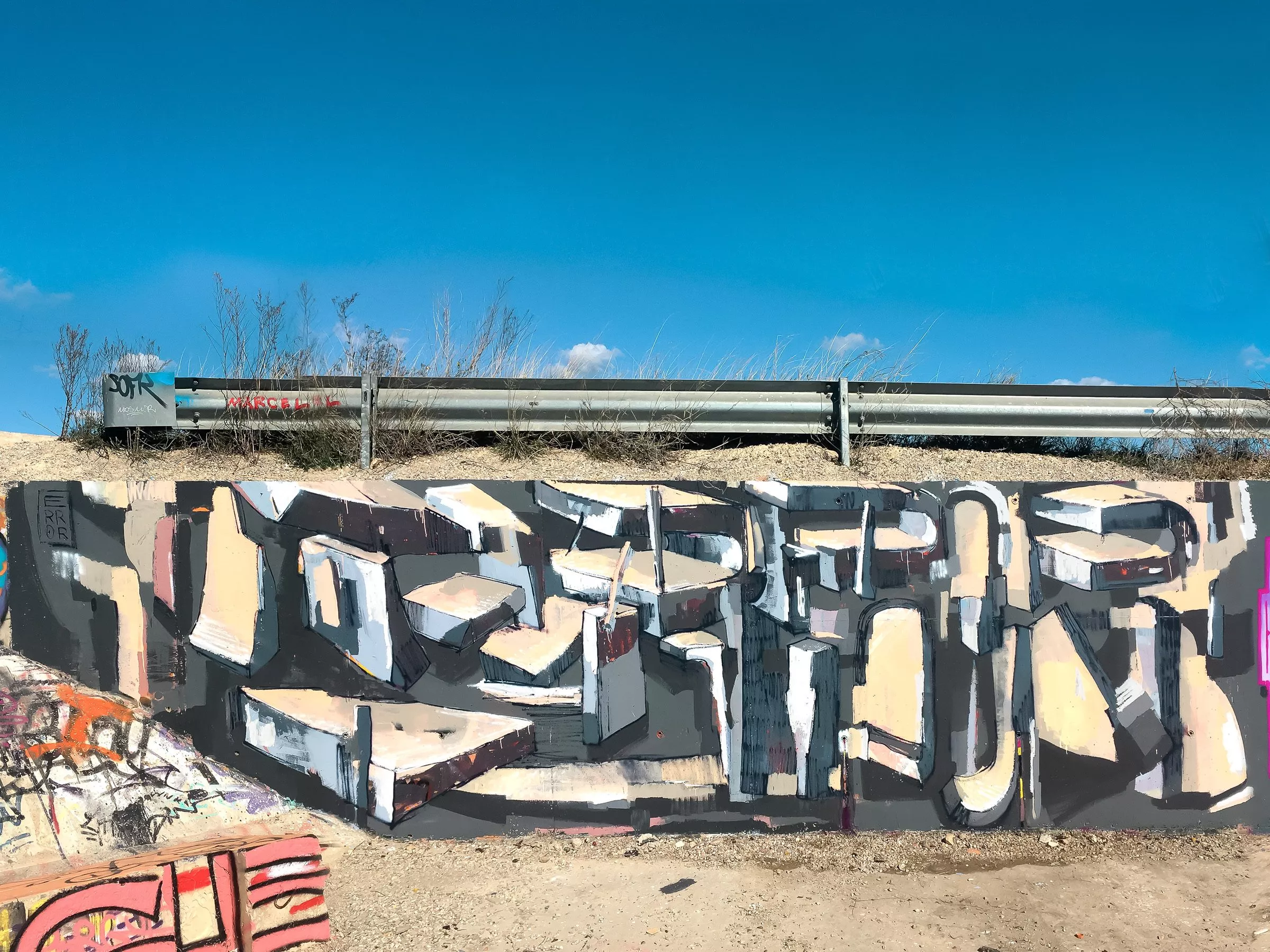
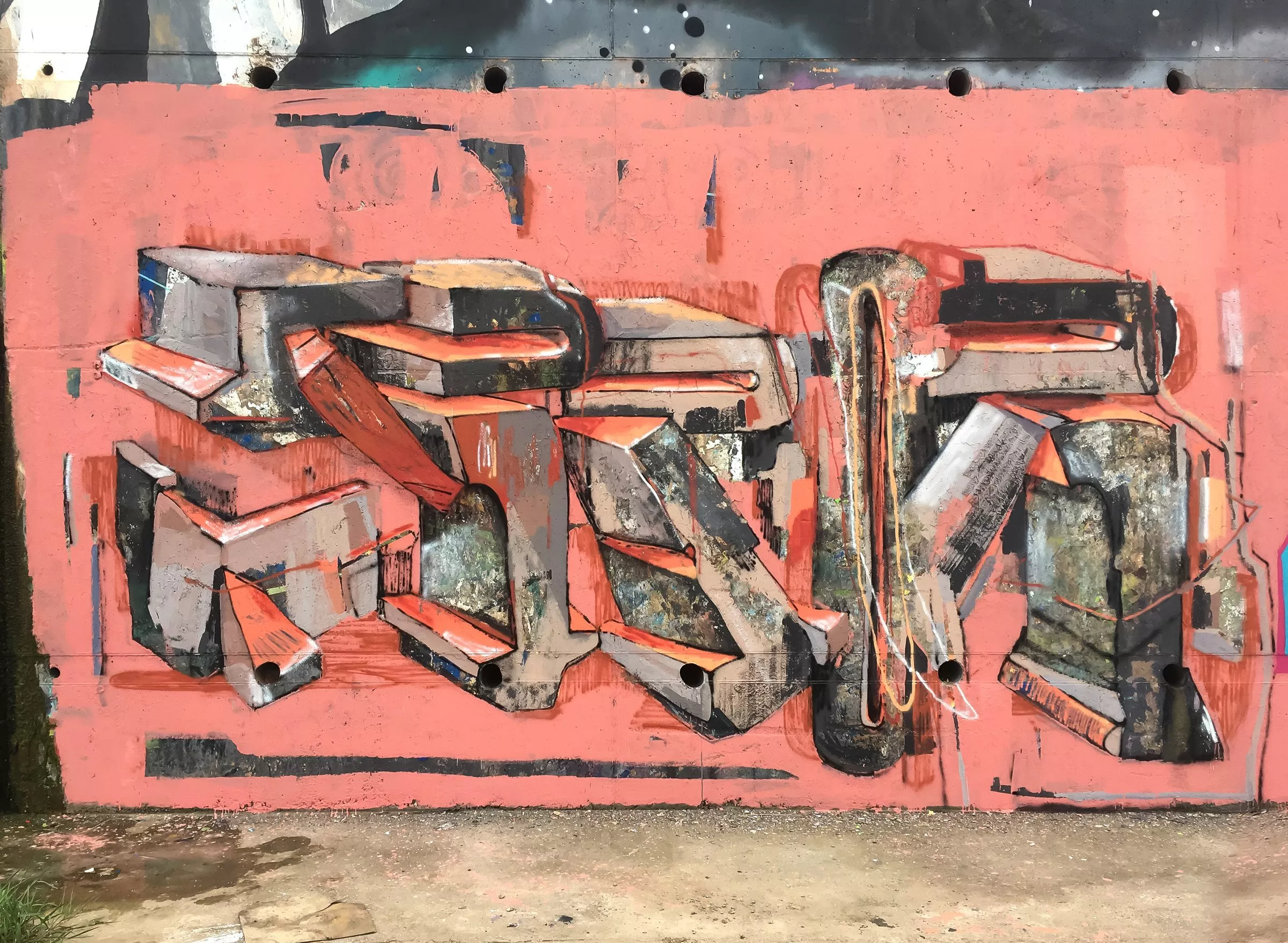
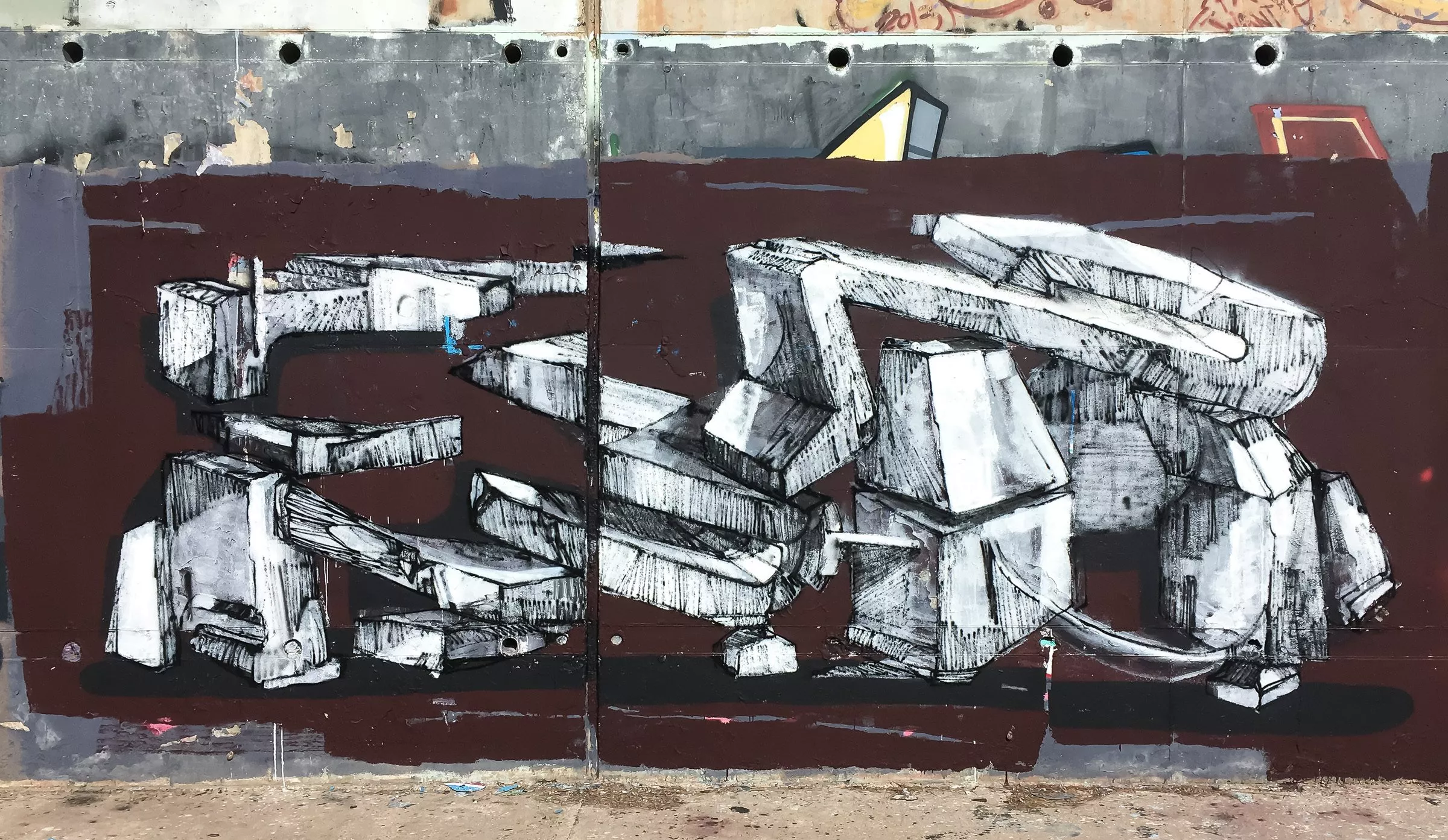
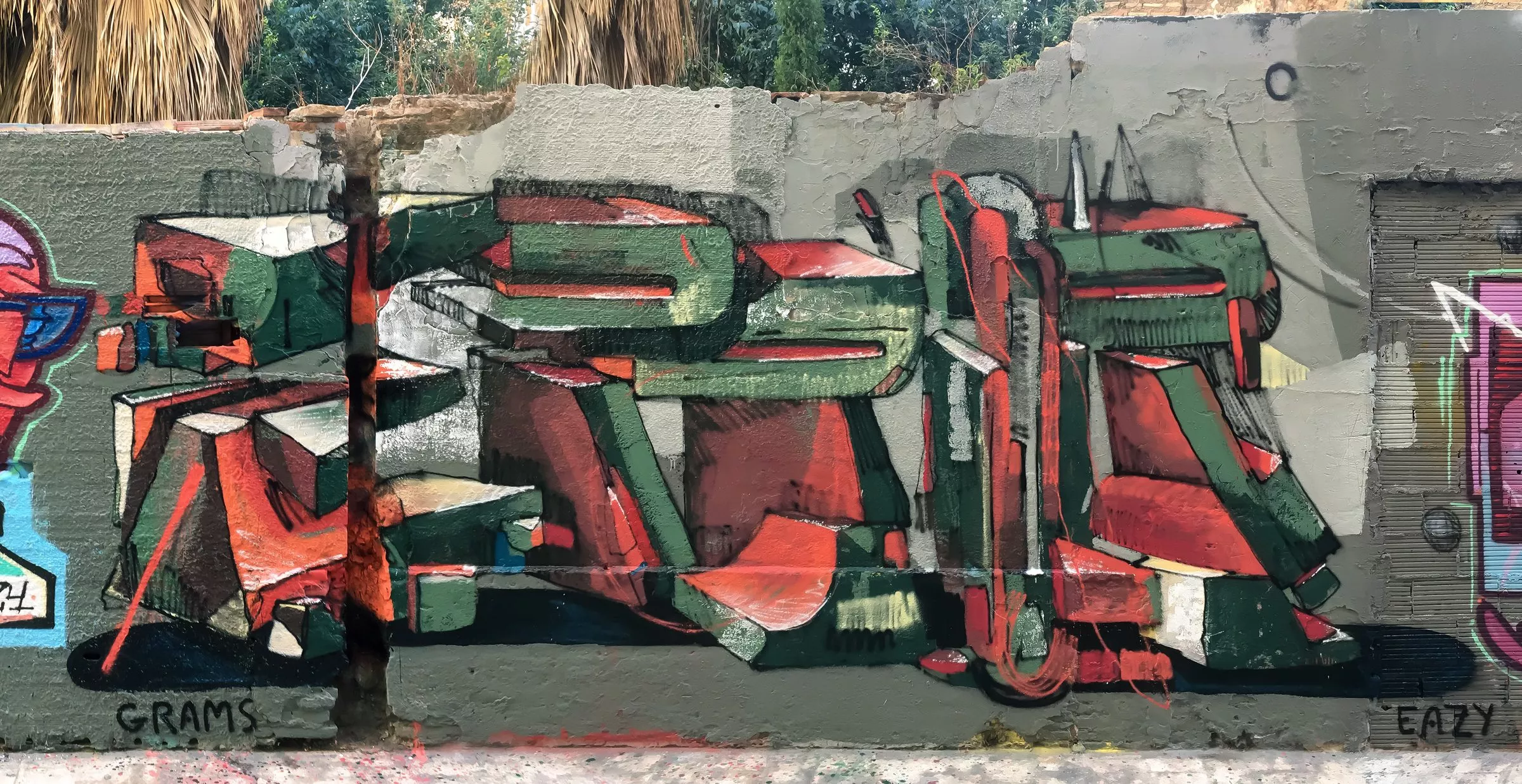
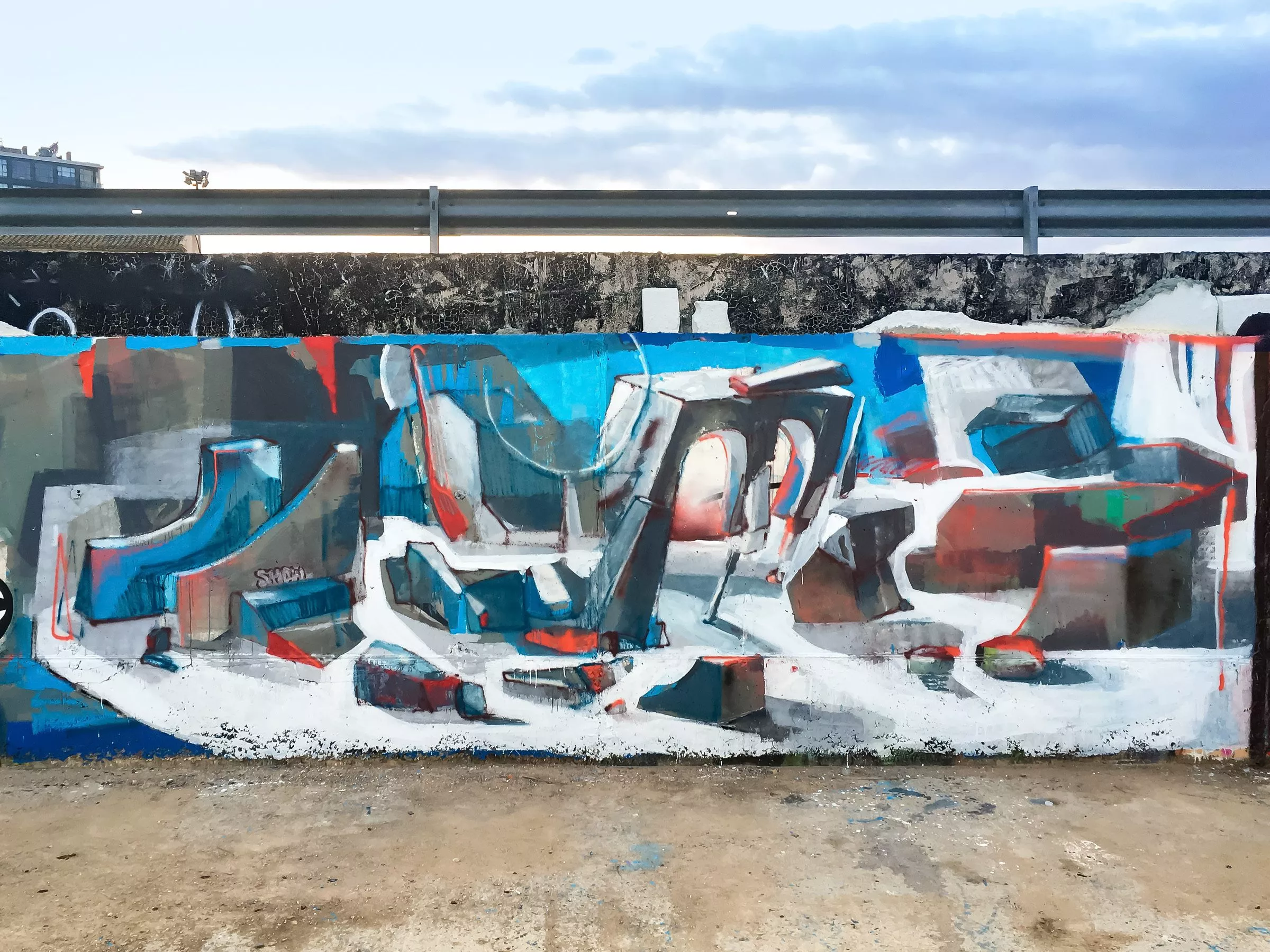
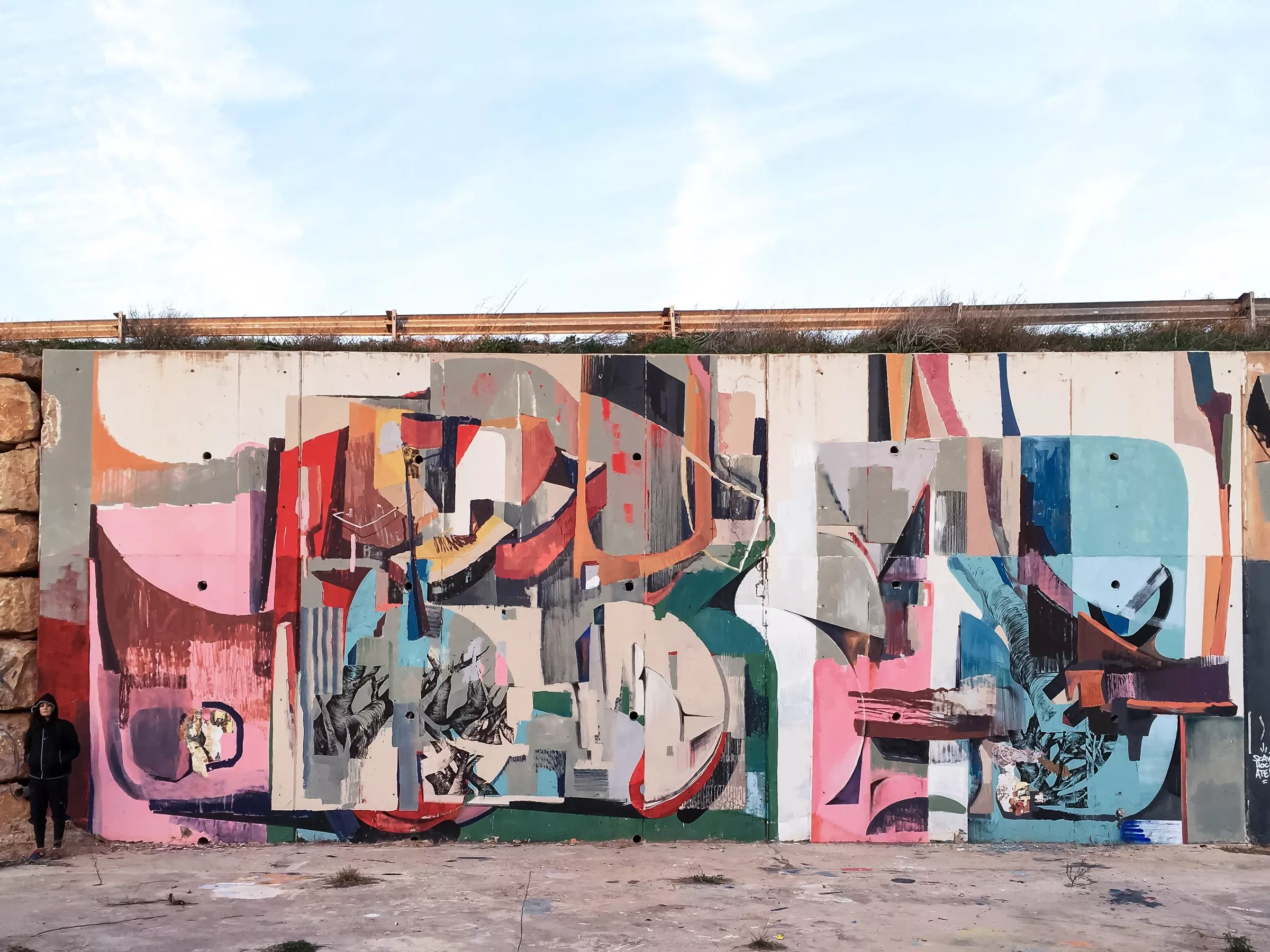
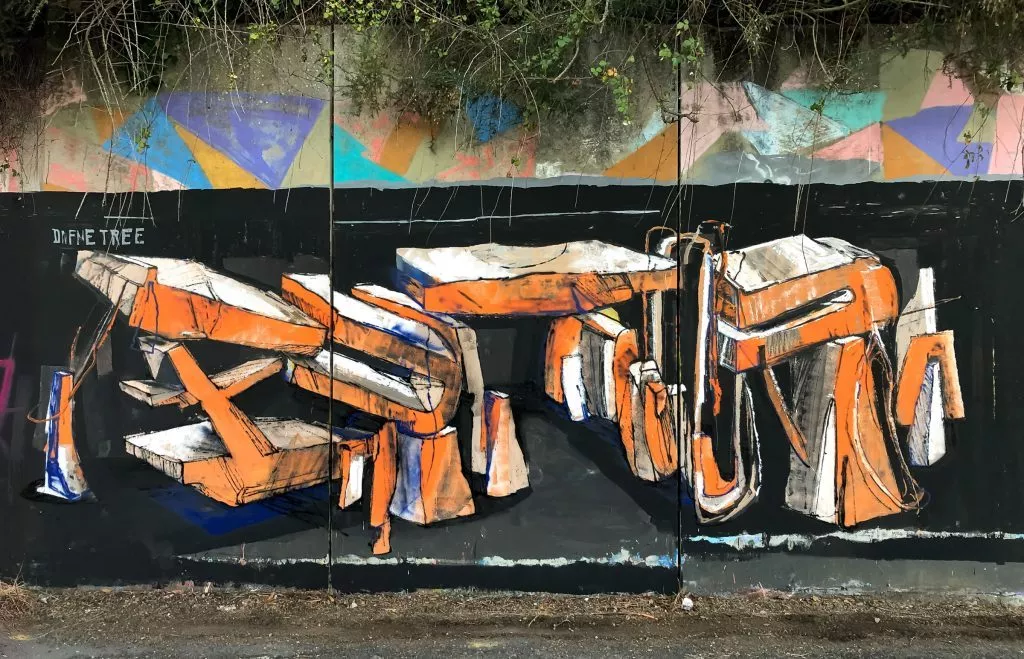
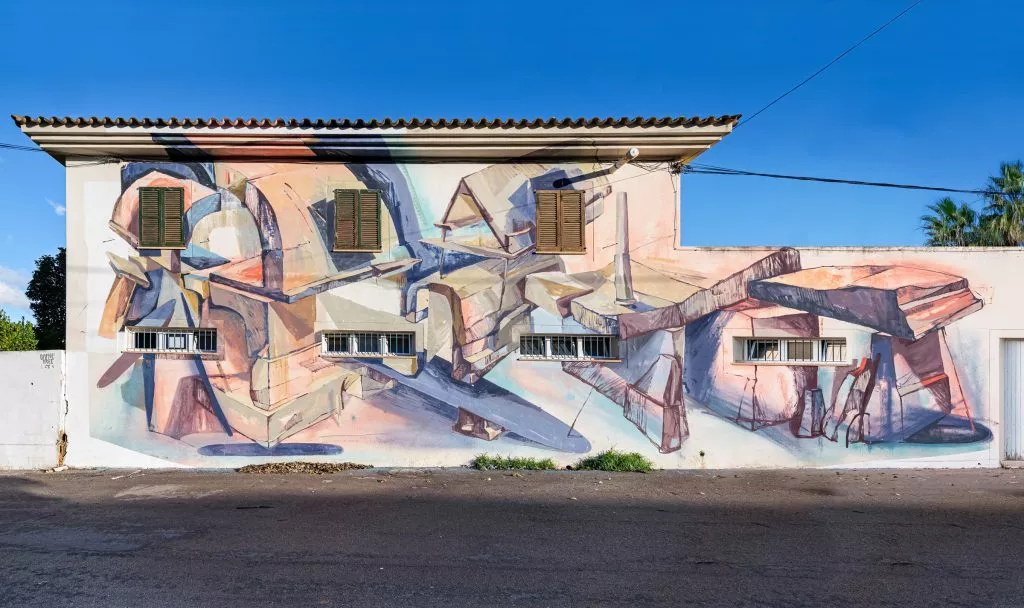
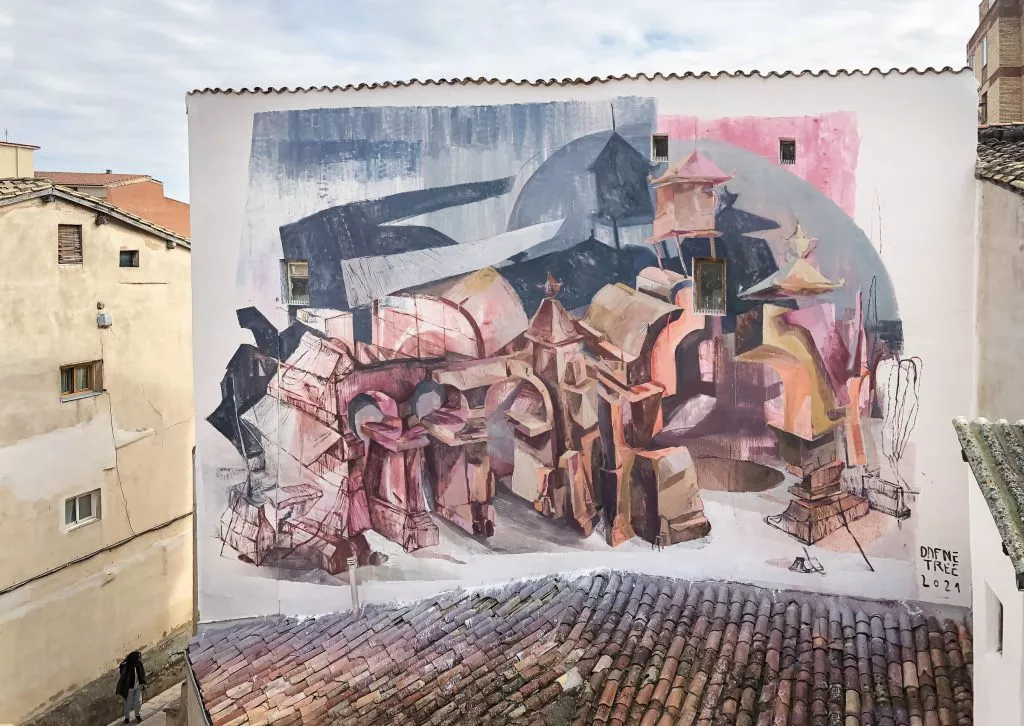
Working methods in situ
By integrating elements of the near environment, like the color of the wall, the texture of it, colors of things around in the space, the space around becomes part of the work, that is documented on a photograph as a work in situ. Depending on the colors shades and textures she finds around in the spot she chose, she uses the complementary colors, playing with elements of the place, combining chromatics and creating a painting in a place not just on a wall: a painting in a space, a work in situ. Using different techniques, she mixes her colors with wall paint with primary colors, works with roller, brush, tape and at the end spray paint. Using pastel colors and muted tones for her wall paintings most of the time, she employs more bright colors in the last years. DAFNE Tree never does a specific sketch before painting a wall, even if she sketches all the time in her sketch books. Most of the time she paints spontaneously in lost places she found on her bike trips. Sometimes she conceived a wall painting in advance when spotting with the bike and thinking about an idea for the place after visiting and taking pictures of it. But as she says, even if you plan a painting in advance, there are always changes of the initial image idea once you are painting in situ because you are under the influence of the space. Besides her paintings outdoors, DAFNE Tree is working in her studio in Valencia, drawing with ink and watercolor on paper and exhibiting her studio work in galleries. But she always needs to go outside to paint, she says, not only for the big scale, but also to feel that freedom painting on walls in those deserted places of the past.
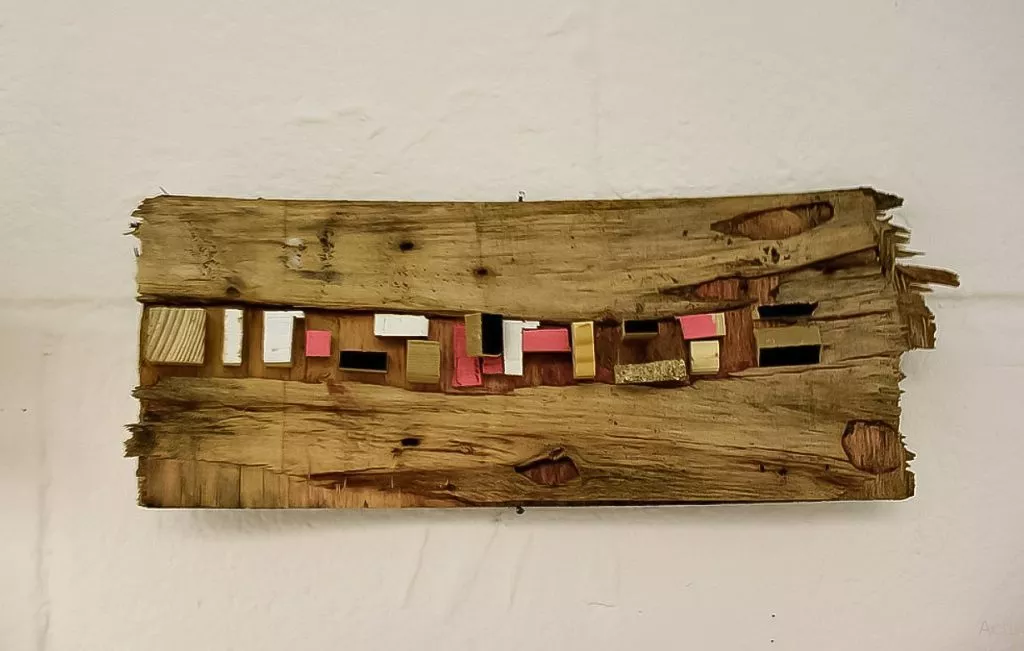
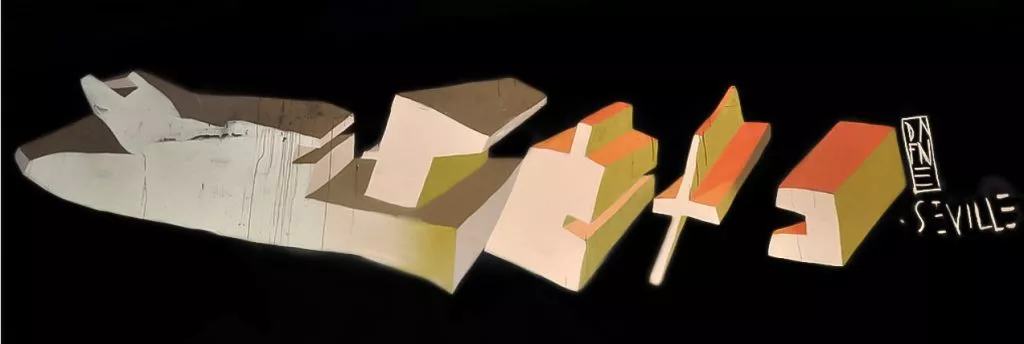
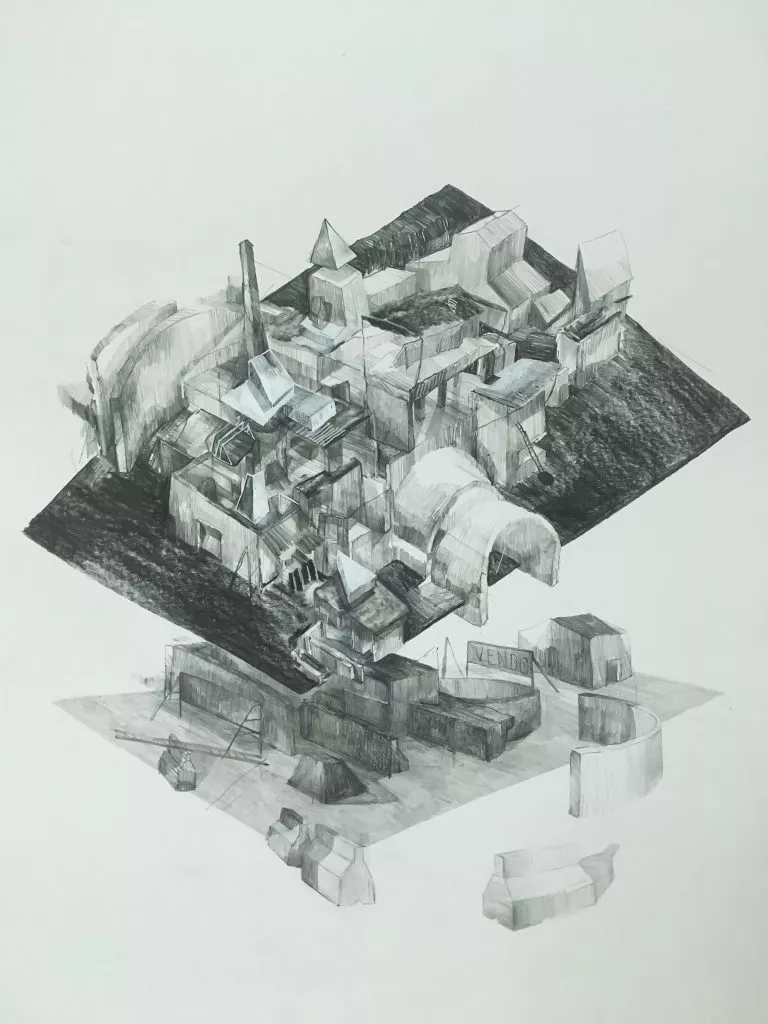
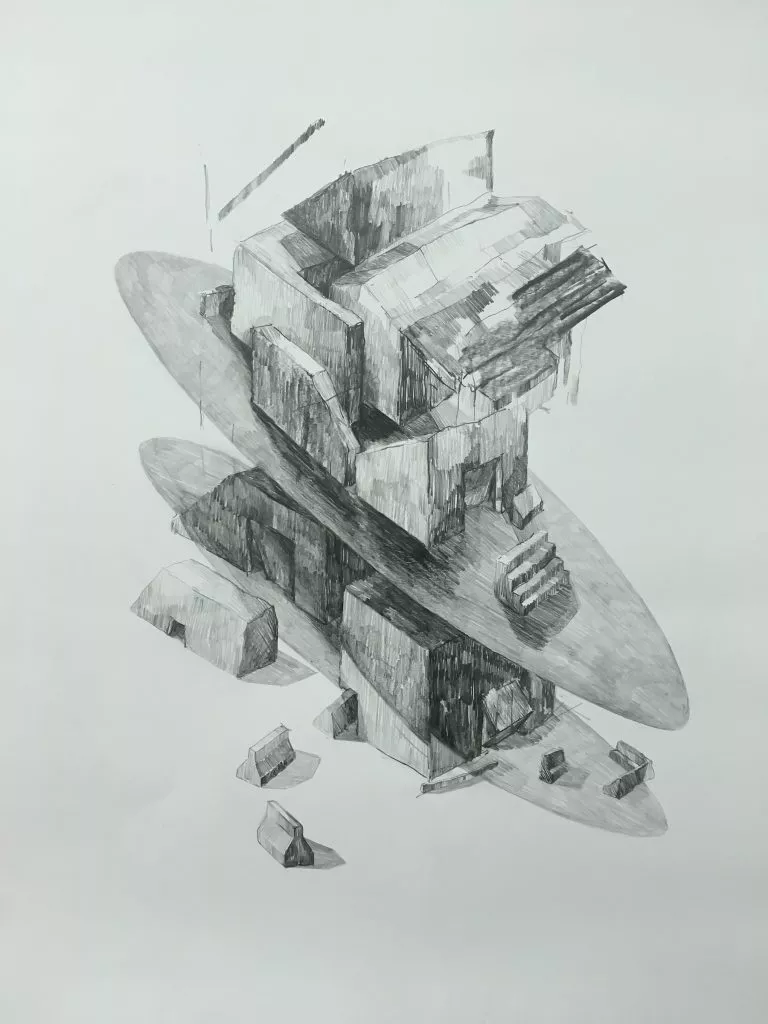
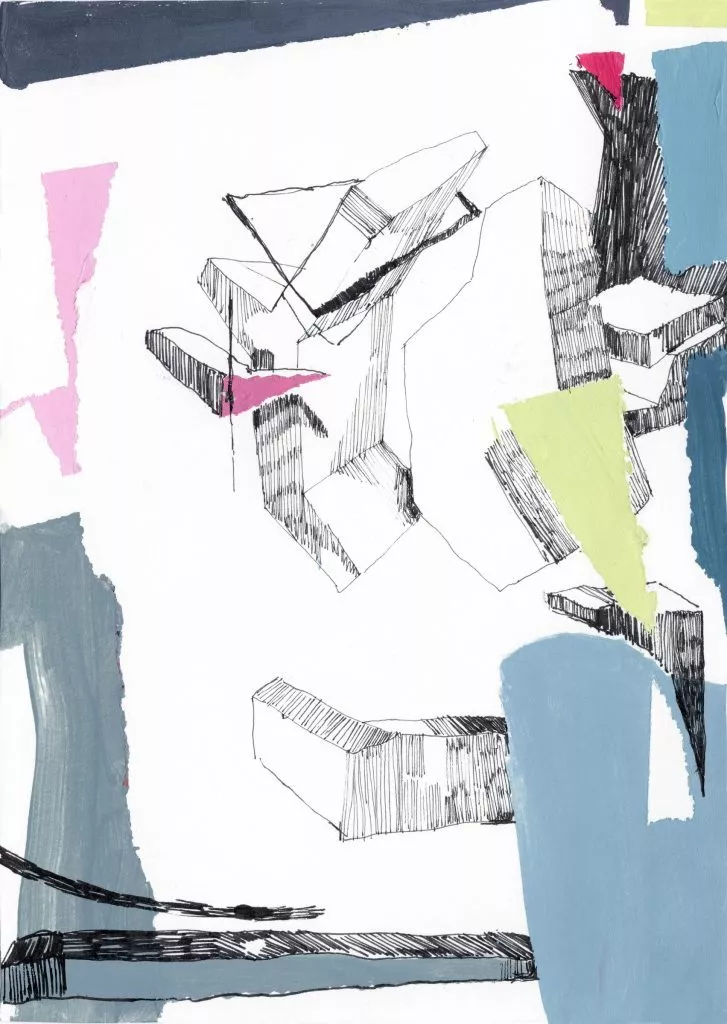
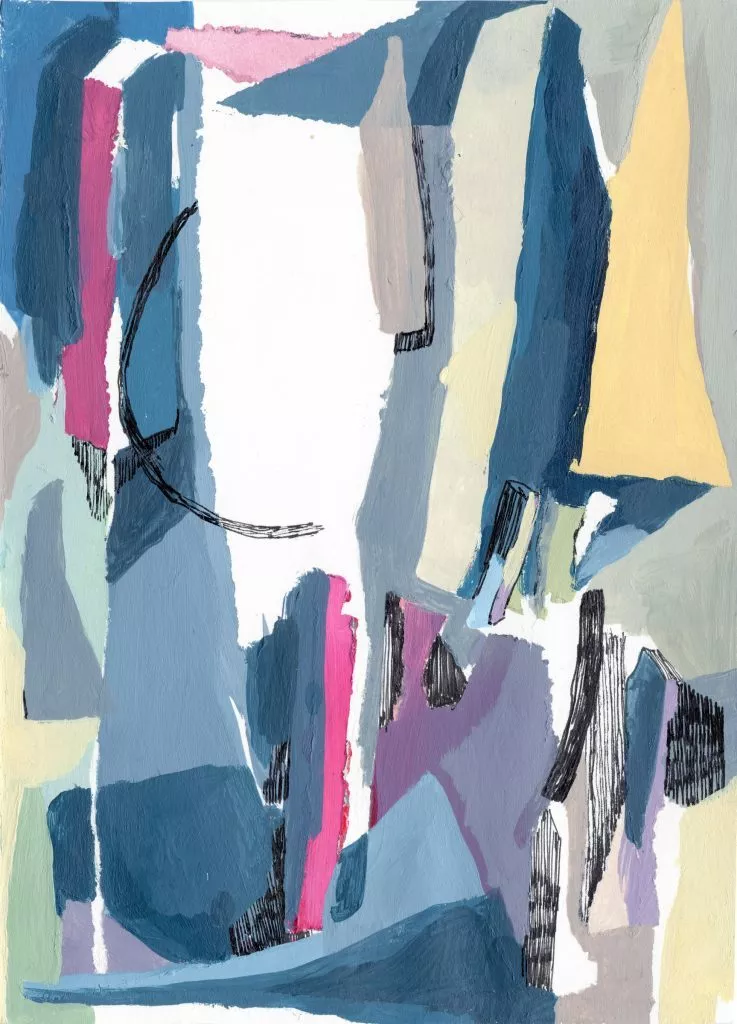
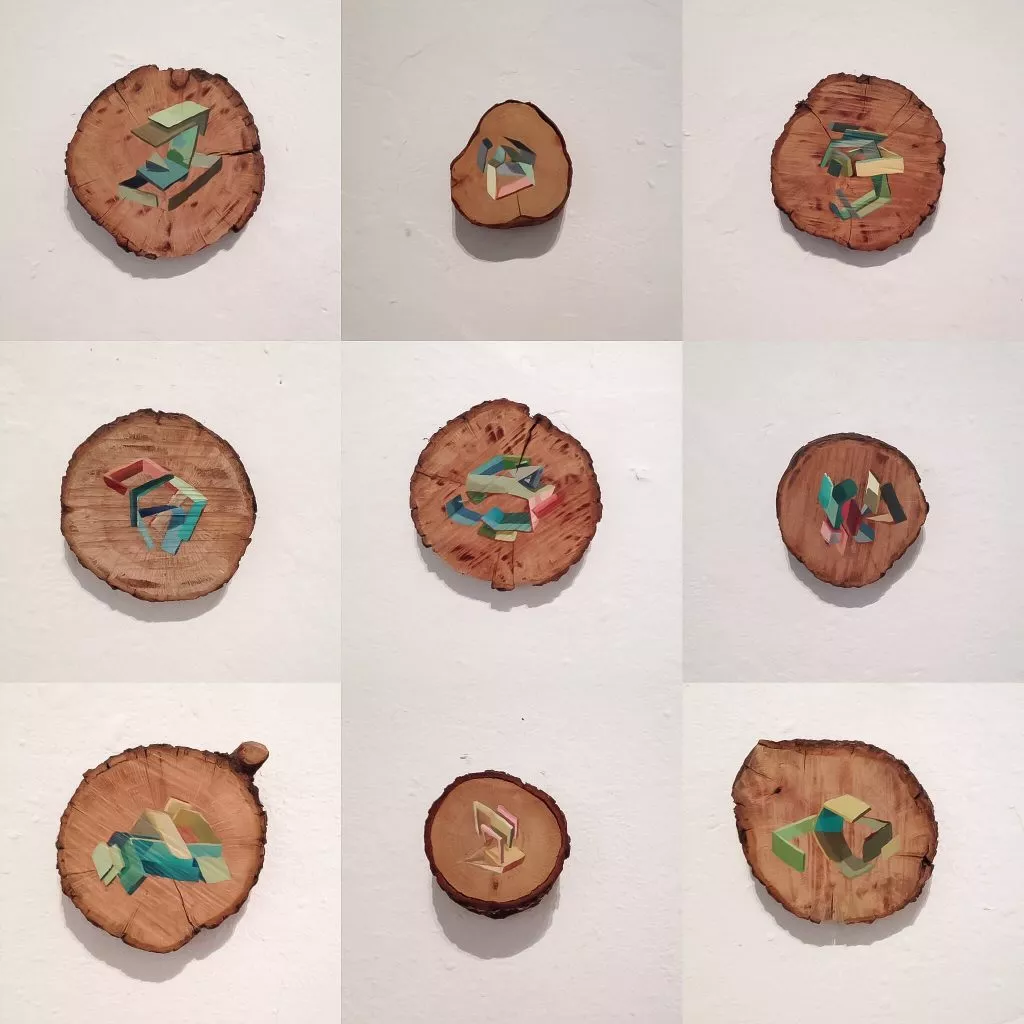
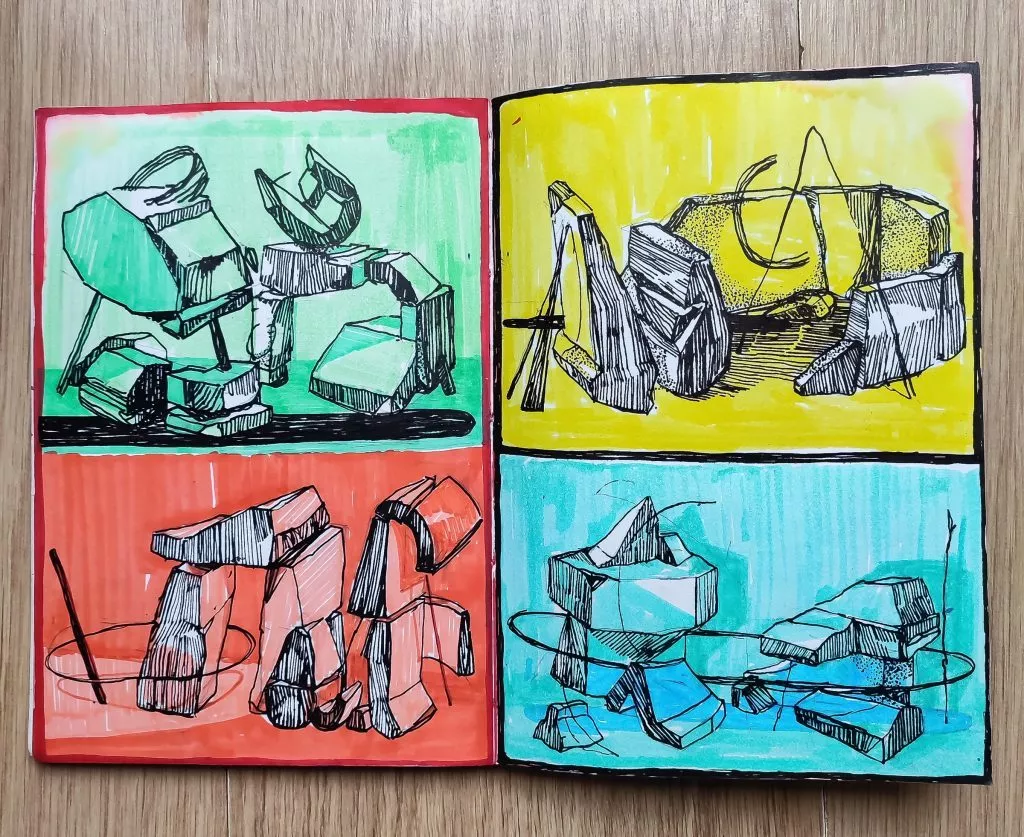
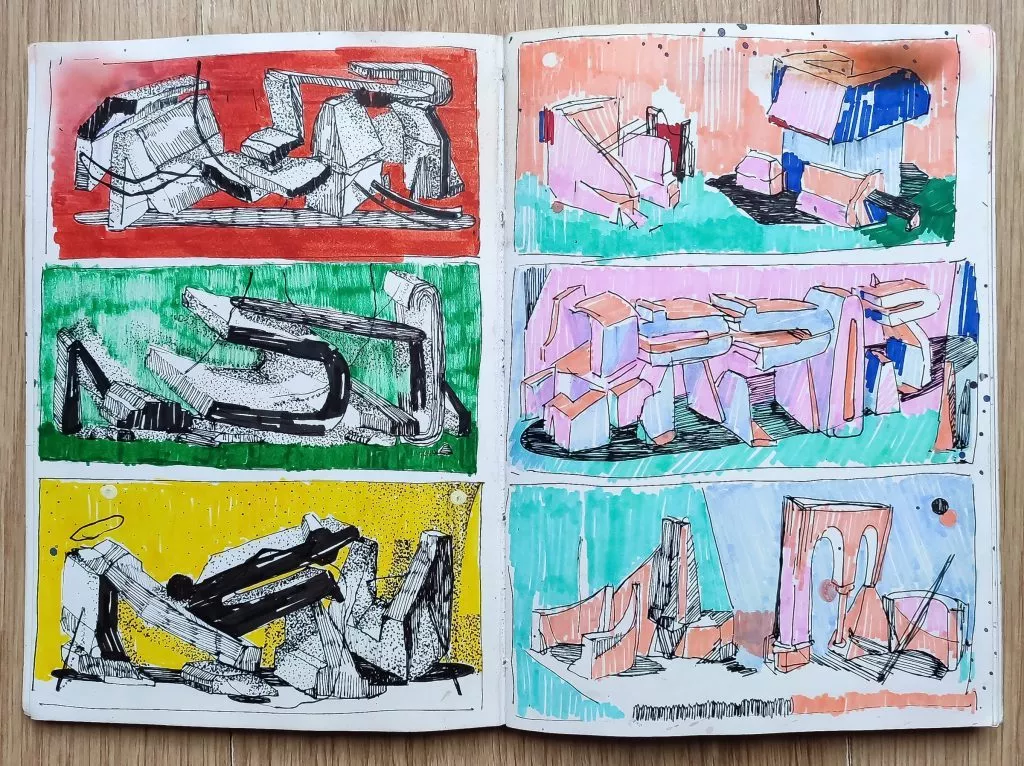
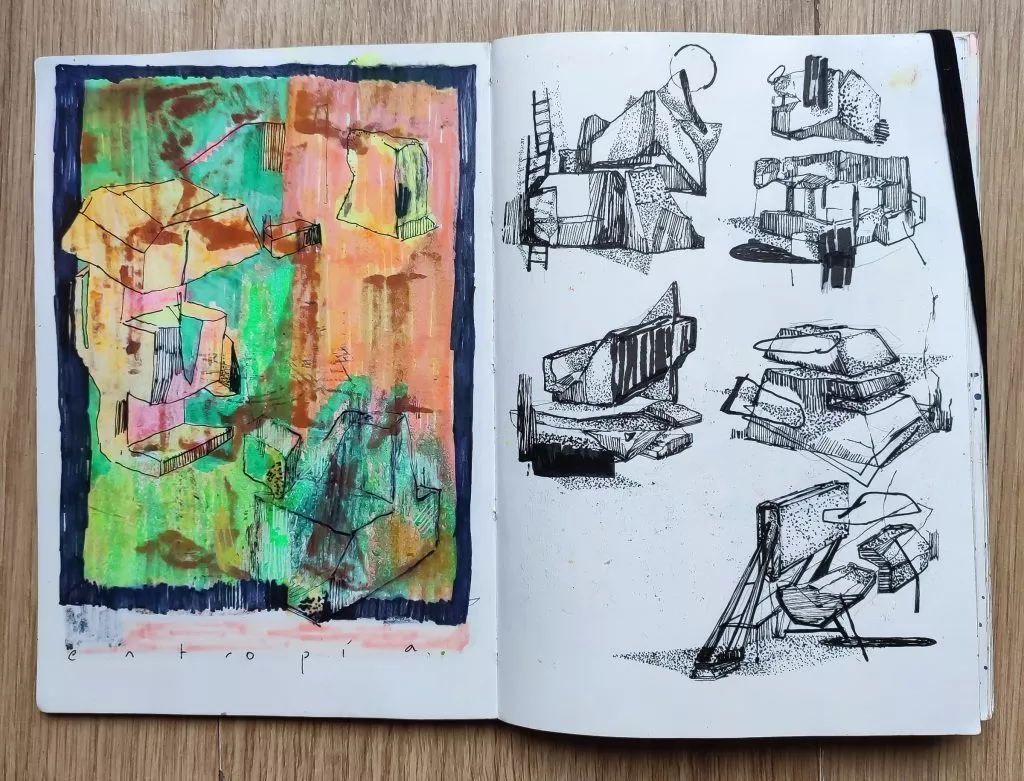
687 views
Categories
Tags:



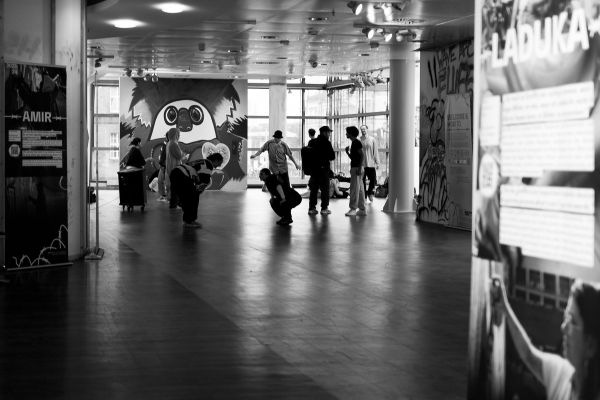
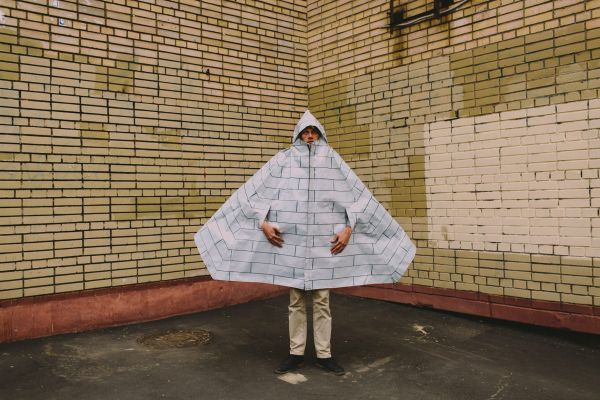
Leave a Reply